The 5 Best Hotels in Brittany, France - Ultimate Guide to Luxury StaysEmbark on a journey to the captivating landscapes and rich history of Brittany, France, where each corner unveils a unique blend of coastal allure and cultural richness. Whether you're a seasoned traveler or a first-time visitor, choosing the right accommodation plays a pivotal role in shaping your experience. In this guide, we're delighted to present an exclusive insight into the crème de la crème of hospitality. Join us as we unveil the top five hotels in Brittany, each promising an unparalleled combination of luxury, comfort, and distinctive character. From regal châteaux to serene seaside retreats, these establishments redefine hospitality in this enchanting region. Let's delve into the essence of each, exploring the unique offerings that make them stand out as the finest in Brittany. Your quest for the perfect stay begins here, where excellence meets elegance in every corner of this picturesque destination. 1) Unveiling the Timeless Grandeur of Château de LocguénoléEmbark on a captivating journey into the heart of luxury and history as we unveil the incomparable allure of Château de Locguénolé. Nestled along the picturesque Route de Port Louis in Kervignac, Morbihan, this magnificent château stands as a testament to timeless grandeur. From its perch overlooking the River Blavet, where it gracefully meets the sea, to the meticulously preserved rooms that once housed a 19th-century castle and an 18th-century mansion, Château de Locguénolé beckons travelers seeking an extraordinary escape. Explore the lush grounds extending to a private pontoon, inviting guests to embark on sailing or fishing excursions on the ocean, with boats available for hire on-site. As a distinguished member of Relais & Châteaux, this haven seamlessly blends authenticity and opulence. The nearby thatched cottages in Kerniaven, just 4km away, offer rustic simplicity and homely warmth. Join us as we delve into the details of Château de Locguénolé's rich heritage, exploring its well-preserved rooms that effortlessly marry historic charm with modern comfort. Discover the culinary wonders of the Michelin-starred restaurant, where Jérémie Louis artfully blends flavors of the ocean with the bounty of the Breton kitchen garden. Whether it's a relaxing break by the swimming pool, a leisurely game of tennis, or a serene moment in the hammam and sauna, Château de Locguénolé promises an array of activities for an unforgettable stay. Plan your visit to this regal retreat and immerse yourself in the beauty, elegance, and hospitality that define the essence of Château de Locguénolé. Location and Contact InformationAddress: Château de Locguénolé, Route de Port Louis, 56700, Kervignac, Morbihan, France. Nestled overlooking the River Blavet: Situated in Kervignac, this charming château overlooks the River Blavet, near the point where it gracefully meets the sea. The extensive grounds extend to a pontoon, offering guests the opportunity to embark on fishing or sailing day trips on the ocean, with boats available for hire on-site. Relais & Châteaux Member: A distinguished member of Relais & Châteaux, Château de Locguénolé stands as a testament to luxury and elegance. Website: Château de Locguénolé 2) Le Grand Hôtel des Thermes: Oceanfront Elegance and WellnessEmbark on an exploration of unparalleled coastal elegance and spa perfection at Le Grand Hôtel des Thermes. This five-star haven, nestled on the beachfront of Saint-Malo, France, stands as an ideal sanctuary for weekend getaways, short breaks, or rejuvenating spa retreats. Immerse yourself in the Belle Époque-style luxury that defines this hotel, where majestic architecture crafted from stone and metal gracefully overlooks the open sea, surrounded by vast expanses of sandy beaches. Location and Contact InformationAddress: Le Grand Hôtel des Thermes, 100 Bd Hébert, 35400 Saint-Malo Nestled on the Beachfront: Positioned directly on the beachfront, the hotel offers breathtaking sea views from its superb terrace, lounges, rooms, and suites. Website: Le Grand Hôtel des Thermes 3) Hôtel Barrière Le Grand Hôtel Dinard: Where History Meets Modern LuxuryBask in the serenity of an iconic establishment overlooking the turquoise waves, where the very essence of tranquility and timeless elegance converges — welcome to Hôtel Barrière Le Grand Hôtel Dinard. For nearly 150 years, this enchanting retreat has stood as a beacon of peace, quiet, and serenity along the captivating shores of Dinard, France. In 2019, the entire Grand Hôtel underwent a transformative redesign by the renowned interior decorator Alexandre Danan, breathing new life into its storied walls. The result is a harmonious blend of historic charm and modern allure, ensuring each moment spent within its confines is a testament to refined living. Indulge in the exclusivity of the Gold Key Concierge services, relax in the private pool, or rejuvenate your senses in the wellness center, sauna, and hammam — every facet of the hotel is designed to envelop you in an ideal aura of serenity. From daydreaming away the morning on the beach to savoring moments at the casino and taking moonlit strolls, Hôtel Barrière Le Grand Hôtel Dinard offers an iconic location that gently lulls you with the emerald reflections of the sea. Experience the symphony of tranquility and modern opulence at Hôtel Barrière Le Grand Hôtel Dinard, where every detail is meticulously curated to make your stay an unforgettable journey through time and coastal elegance. Plan your escape and let the waves of serenity embrace you in this iconic destination. Location and Contact InformationAddress: 46 avenue George V, Dinard, France 35801 Overlooking the Turquoise Waves: With an unparalleled view of the turquoise waves, the hotel creates an idyllic setting that defines the essence of seaside living. Website: Hôtel Barrière Le Grand Hôtel Dinard 4) La Villa Les Hydrangeas: Quaint Charm Amidst Nature's BeautyExperience the art of cultivating joyful holidays and savoring life's simple pleasures at Villa Les Hydrangeas, a delightful retreat facing the mesmerizing 7 Islands archipelago in Perros Guirec. Steeped in history as a former Belle Epoque boarding house, this charming hotel-restaurant has preserved its familial spirit, infusing every corner with a unique atmosphere that beckons guests to unwind and reconnect with the essence of life. From the moment you step into Villa Les Hydrangeas, you are enveloped in the warmth of a bygone era, where each creak of the floorboards and whisper of the wind tells tales of a time when the simple pleasures of life took center stage. As the sun rises, indulge in a tasty breakfast that sets the tone for a day filled with exploration and relaxation. Snack time becomes an opportunity to recharge after an invigorating walk along the customs path in Ploumanac'h, immersing yourself in the natural beauty that Brittany generously offers. The hotel's restaurant, adorned with tasty dishes infused with the flavors of the region, becomes a haven for savoring the culinary delights of Brittany. As the day unfolds, find tranquility on your balcony and witness the sun setting over the pink granite coast, casting a warm glow that paints the sky with hues of serenity. At Villa Les Hydrangeas, moments of complicity and happiness are woven into the fabric of your day, fostering a light and relaxed mindset that leaves you with cherished holiday memories. Plan your escape to Villa Les Hydrangeas and embrace a retreat where the great joys of holidays and the simplicity of life intertwine harmoniously, creating an experience that lingers in your heart long after your stay. Location and Contact InformationAddress: Villa Les Hydrangeas, 53 Bd Georges Clémenceau, 22700 Perros-Guirec Website: Villa Les Hydrangeas 5) Villa Tri Men in Sainte-Marine: Coastal Elegance and TranquilityFrom the moment you step through the entrance of Villa Tri Men, a character-filled haven adorned with contemporary and elegant décor, located in Combrit Sainte-Marine in the Finistère Sud, you'll be enchanted by the seamless fusion of history and modern sophistication. An Admiral's Legacy: Originally constructed in 1913 by a Breton admiral, "Tri Men" embodied all the elements of the splendid Atlantic residences. Since its transformation into a hotel in 2003, La Villa Tri Men has exuded understated elegance. Adorned with the works of artists such as Lucien Simon, Lionel Floch, and René Quéré, the common spaces showcase a rich artistic tapestry. The villa, already possessing character, underwent a meticulous renovation in 2017/2018, adding even more charm and comfort. The essence of "La Villa Tri Men" extends beyond its walls, encompassing a Michelin-starred restaurant, "Les Trois Rochers," and 16 thoughtfully designed rooms and 3 cottages that seamlessly blend with the natural surroundings. At first glance, the lush greenery of the magnificent park, overlooking the Odet, captures your imagination. Sainte-Marine, with its warm harbor nestled amidst wild nature, stunning beaches, and local culture, exudes a unique atmosphere that will draw you in, beckoning you to return time and again. Immerse yourself in the allure of "La Villa Tri Men," where each detail tells a story of refinement and cultural richness. Discover a captivating blend of history, art, and coastal serenity, inviting you to experience a retreat that transcends time and leaves an indelible mark on your heart. Location and Contact InformationConclusion: A Timeless Sojourn, Where Elegance Meets TranquilityIn drawing the curtains on our exploration of Brittany's finest retreats, we invite you to savor the essence of timeless elegance and tranquility that each destination offers. From the regal splendor of Château de Locguénolé to the coastal charm of Hôtel Barrière Le Grand Hôtel Dinard, and from the intimate allure of La Villa Les Hydrangeas to the artistic haven of Villa Tri Men in Sainte-Marine, Brittany unfolds as a tapestry of refined luxury. As you navigate the rich landscapes and cultural nuances of these remarkable establishments, may you find moments of serenity, culinary delights, and memories to be cherished. Whether it's the panoramic views of the sea, the historical charm echoing through each corridor, or the harmonious blend of art and nature, these retreats promise an escape from the ordinary. Each stay is not merely an accommodation but an invitation to step into a world where time slows down, and the simple pleasures of life are celebrated. Brittany, with its wild landscapes, stunning coastlines, and warm hospitality, unveils itself as an ideal destination for those seeking a perfect fusion of elegance and tranquility. So, embark on your journey, explore the enchanting corners of Brittany, and let these retreats be the canvas upon which your own stories of relaxation, indulgence, and discovery unfold. In Brittany's embrace, elegance meets tranquility, creating a tapestry of memories that linger long after the voyage concludes.
0 Comments
Explorer la Richesse du New Orleans Jazz MuseumAu cœur même du berceau du jazz, la Nouvelle-Orléans, se trouve un trésor musical incontournable : le New Orleans Jazz Museum. Si vous êtes passionné par l'histoire et la magie de cette musique envoûtante, une visite à ce musée est un impératif. Cependant, ce que beaucoup ignorent, c'est le lien surprenant entre ce bastion musical et la Bretagne. Charles Kergaravat, le président de Breizh Amerika, a été récemment invité à explorer cette connexion unique. Joignez-vous à nous pour un voyage captivant à travers le temps et les mélodies, où le Musée du Jazz de la Nouvelle-Orléans se dévoile comme un lieu où l'histoire bretonne et la naissance du jazz s'entrelacent de manière inattendue. Retracer les Origines du Jazz au Cœur de La Nouvelle-OrléansLa Nouvelle-Orléans, berceau du jazz, revendique un patrimoine musical aussi diversifié et dynamique que sa tapisserie culturelle. Pour comprendre l'évolution complexe du jazz à La Nouvelle-Orléans, nous devons remonter dans l'histoire unique de la ville et explorer ses influences multiculturelles. Fondée en 1718 en tant que partie de la colonie de la Louisiane française, La Nouvelle-Orléans a connu une série de transitions culturelles. Les territoires de la Louisiane passèrent sous la domination espagnole en 1763, pour revenir aux mains françaises en 1803, puis être vendus aux États-Unis dans l'acte historique de la Louisiana Purchase. Ce qui distinguait La Nouvelle-Orléans du reste des États-Unis était ses relations culturelles avec le Vieux Monde. La culture créole de la ville, enracinée dans le catholicisme et la langue française, favorisait une perspective libérale de la vie, célébrant la bonne nourriture, le vin, la musique et la danse. Les festivals étaient monnaie courante, et le premier gouverneur américain de la ville, William Claiborne, fit remarquer que les Néo-Orléanais semblaient ingouvernables en raison de leur passion pour la danse. L'amalgame culturel ne s'arrêta pas là, il fut enrichi par des influences africaines. Dès 1721, les esclaves ouest-africains représentaient 30 % de la population de la ville. À la fin des années 1700, des personnes d'ascendance africaine variée, libres et esclaves, constituaient plus de la moitié de la population de La Nouvelle-Orléans. Leur arrivée, souvent par le biais des Caraïbes, apporta avec elle des traditions culturelles caribéen qui allaient façonner indélébilement le paysage musical de la ville. Après la Louisiana Purchase, un afflux d'Anglo-Américains et d'Afro-Américains anglophones introduisit de nouveaux éléments culturels, conduisant à des établissements en amont de Canal Street. Le secteur américain "uptown" coexistait avec le "downtown" créole établi, créant une dualité culturelle dynamique. Cette expansion joua un rôle crucial dans l'introduction d'éléments de blues, de spirituals et de danses rurales dans la mosaïque musicale de la ville. Le XIXe siècle vit une diversité ethnique accrue, avec l'arrivée d'immigrants allemands, irlandais et italiens ajoutant à ce mélange culturel. Notamment, la concentration de nouveaux immigrants européens à La Nouvelle-Orléans était une caractéristique distinctive dans le paysage du Sud. La riche interaction entre les cultures a facilité un échange culturel florissant, exemplifié par la communauté "Créoles de couleur" de la ville. Ces individus, d'ascendance africaine et européenne mixte, étaient souvent des artisans et commerçants bien éduqués, parmi lesquels les musiciens se faisaient connaître pour leur talent et leur discipline. La Nouvelle-Orléans a défié les schémas urbains conventionnels, car des personnes de différentes cultures et races vivaient souvent à proximité, favorisant une interaction culturelle riche. La ville se distinguait par l'absence de ghettos mono-culturels, contribuant à l'épanouissement de l'échange de traditions. Ce creuset d'influences a jeté les bases du développement de nombreuses traditions distinctes, La Nouvelle-Orléans devenant synonyme de festivals, de délices culinaires et, surtout, de sa musique. Chaque groupe ethnique de la ville a joué un rôle dans l'environnement musical actif, contribuant à la genèse du jazz. Une influence notable sur le jazz naissant était la tradition africaine de danse et de percussions documentée à La Nouvelle-Orléans. Congo Square, autrefois lieu de rassemblement des esclaves, est devenu un centre de danses africaines et a préservé des éléments culturels africains. Les "Mardi Gras Indians", une tradition unique née des quartiers afro-américains, ont également façonné l'environnement musical avec leurs percussions et leurs chants en réponse, évoquant la musique ouest-africaine et caribéenne. Alors que la ville adoptait des formes musicales populaires après la guerre civile, les styles syncopés influencés par les traditions afro-américaines, tels que le cakewalk et les airs de minstrel, gagnaient en importance. Dès les années 1890, des compositions syncopées au piano appelées ragtime créèrent une sensation musicale populaire, et les fanfares commencèrent à intégrer des morceaux de ragtime à leur répertoire traditionnel. Dans le paysage sonore en évolution de La Nouvelle-Orléans, les graines du jazz étaient semées, nourries par une histoire riche, des influences culturelles diverses et un voyage musical qui allait bientôt captiver le monde. Qu'est-ce que le New Orleans Jazz Museum ?Le Musée du Jazz de La Nouvelle-Orléans, établi au cœur de la ville qui a donné naissance au jazz, est bien plus qu'une simple institution culturelle. C'est un sanctuaire qui témoigne de l'essence même de cette musique envoûtante. Explorez avec nous les trésors soigneusement préservés qui retracent l'épopée du jazz et découvrez pourquoi cette institution est un incontournable pour les amateurs de musique du monde entier. Au sein de ses murs, le musée dévoile des archives fascinantes, des instruments historiques, et des expositions immersives qui racontent l'histoire riche et complexe du jazz à La Nouvelle-Orléans. De l'influence des premiers maîtres du jazz aux moments emblématiques des Mardi Gras Indians, chaque exposition offre une plongée profonde dans les racines de cette musique qui a conquis le monde. Le Musée du Jazz ne se contente pas de célébrer le passé ; il sert également de plateforme dynamique pour les artistes contemporains qui perpétuent l'héritage musical de La Nouvelle-Orléans. Des performances live aux ateliers interactifs, le musée offre une expérience immersive où le jazz prend vie sous toutes ses formes. Que vous soyez un passionné de jazz chevronné ou un néophyte curieux, le Musée du Jazz de La Nouvelle-Orléans promet une aventure musicale inoubliable. Joignez-vous à nous pour découvrir comment ce lieu emblématique préserve, célèbre, et continue d'écrire l'histoire du jazz. Trésors des Archives : les Collections du New Orleans Jazz MuseumLe Musée du Jazz de La Nouvelle-Orléans abrite deux archives sur place : les Collections du New Orleans Jazz Club et celles du Louisiana Historical Center. Ces trésors d'archives offrent un aperçu unique dans le riche patrimoine musical et historique de la région. Collection du New Orleans Jazz Club Au cœur de notre musée repose la renommée Collection du New Orleans Jazz Club, rassemblée au fil des décennies par le New Orleans Jazz Club. Elle comprend la plus grande collection mondiale d'instruments de jazz, d'artefacts précieux, de photographies et d'éphémères. Des premières cornets de Louis Armstrong à un disque de 1917 du premier enregistrement de jazz jamais réalisé, la collection est une vitrine exceptionnelle de l'histoire du jazz. Elle comprend également la plus grande collection mondiale d'instruments ayant appartenu à des figures majeures du jazz - trompettes, cornets, trombones, clarinettes et saxophones joués par des grands noms tels que Bix Beiderbecke, Edward "Kid" Ory, George Lewis, Sidney Bechet et Dizzy Gillespie. Parmi les autres objets de la collection, on compte 12 000 photographies des débuts du jazz, des enregistrements dans une grande variété de formats, des affiches, des peintures, des tirages, des partitions de musique, des films, des éphémères pertinents, et des fragments architecturaux de lieux de jazz importants. De plus, la collection comprend des matériaux de recherche tels que des lettres, des photographies et des entretiens, accessibles aux chercheurs sur rendez-vous. Louisiana Historical Center L'ancienne Monnaie des États-Unis abrite également le Louisiana Historical Center, l'une des grandes archives américaines. Depuis son ouverture en 1982, le Centre a accueilli des milliers de chercheurs du monde entier. Outre ses collections inestimables de manuscrits et de cartes de l'époque coloniale, le Louisiana Historical Center renferme une richesse de documents de sources primaires et secondaires dans une grande variété de médias. Les archives du Centre comprennent des documents de la Louisiane coloniale, tels que les archives du Conseil Supérieur français (1714-1769) et du Judiciary espagnol (1769-1803), sources primaires inestimables pour la recherche sur l'histoire de la Louisiane. Les collections générales de manuscrits datent de 1584 et comprennent le Code Noir de 1724 signé par Louis XV, ainsi que des documents de la bataille de La Nouvelle-Orléans, de la guerre de 1812, de la guerre américano-mexicaine et de la guerre civile. Plus d'un millier de cartes et une vaste gamme de microfilms font également partie de la collection. Un lien historique entre la Louisiane et la Bretagne ?Le directeur du Musée du Jazz de La Nouvelle-Orléans a ouvert les portes des archives au président de Breizh Amerika, offrant ainsi une immersion authentique dans l'histoire partagée de la Bretagne et de la Louisiane. Charles Kergaravat, président de Breizh Amerika, a récemment été invité à visiter les archives du Musée du Jazz de la Nouvelle-Orléans. Au cours de cette visite fascinante, il a mis au jour des documents historiques liés à deux Bretons illustres qui ont marqué l'histoire de la Louisiane : John James Audubon et Julien de Lallande Poydras. Qui était John James Audubon ?Pionnier de l’ornithologie en Amérique et en France, il est connu aux États-Unis sous le nom de John James Audubon. D'origine bretonne, il est le fils naturel d'un officier de marine nantais installé comme planteur à Saint-Domingue et de Jeanne Rabin, une jeune Bretonne originaire de Touches. Après le décès de sa mère à l'âge de cinq ans, son père l'amène à Nantes, où il est adopté par les époux Audubon. C'est à Couëron, durant la période révolutionnaire, qu'il reçoit une éducation élémentaire tout en développant une passion précoce pour la nature, en particulier pour les oiseaux. À l'âge de 15 ans, son père l'envoie à Paris pour apprendre le dessin dans l'atelier de David. En 1803, son père l'envoie aux États-Unis pour s'occuper d'un domaine près de Philadelphie. Bien que dépourvu d'intérêt pour les affaires, Jean-Jacques se consacre aux études ornithologiques, parcourant le pays pour étudier et documenter la faune aviaire. Cette passion le pousse à négliger ses responsabilités commerciales, le conduisant en prison pour dettes en 1819. L'originalité d'Audubon réside dans sa capacité à reproduire grandeur nature des animaux dans des attitudes naturelles, une approche novatrice pour l'époque. En 1826, lors d'un voyage en Europe, il recueille des souscriptions qui financent l'édition de "Birds of America" en 1827 et 1839. Cet ouvrage magnifique en quatre volumes, avec 435 planches reproduisant ses dessins, est salué pour sa remarquable beauté. Fort de ce succès, Audubon se consacre ensuite à la préparation d'un autre ouvrage, "The Quadrupeds of America", qui connaît également un immense succès. L'héritage d'Audubon va au-delà de ses illustrations exquises, marquant l'ornithologie mondiale et laissant une empreinte indélébile sur la région de la Louisiane où il a apporté sa passion unique pour la nature au XIXe siècle. Même si son œuvre était importante et immense, le juger aujourd’hui à travers nos mœurs contemporaines montrerait un homme complexe et imparfait en raison de ses liens avec l’esclavage. Qui était Julien de Lallande Poydras?Julien de Lallande Poydras, originaire de Bretagne, incarne une figure incontournable dans l'histoire juridique et politique de la Louisiane, servant en tant que délégué du Territoire d'Orléans à la Chambre des représentants des États-Unis de 1809 à 1811. Né le 3 avril 1740 à Rezé près de Nantes, Poydras était le fils de François Poydras et de Madeleine Simon, et il commença son parcours en servant dans la Marine française dès son plus jeune âge. Après avoir été capturé par la Royal Navy en 1760 et s'être échappé de l'Angleterre, Julien Poydras débarqua à Saint-Domingue, émigrant ensuite vers la Louisiane française en 1768, où il s'établit à La Nouvelle-Orléans. D'abord colporteur puis négociant, il sillonna le vaste territoire de la Louisiane française, commerçant du territoire des Arkansas à Bâton-Rouge, de Natchitoches à Nacogdoches, de Natchez à Opelousas, de la vallée de la rivière Ouachita jusqu'à Saint-Louis au bord du Mississippi. Bâtissant sa fortune, il acquit des propriétés, dont des plantations dans la paroisse de Pointe Coupée, et des biens à La Nouvelle-Orléans, où, à sa mort, il avait plus de 1 000 personnes d'ascendance africaine en esclavage sur ses plantations. Engagement Politique Julien de Lallande Poydras démontra très tôt un intérêt pour l'autonomie politique de la Louisiane. Après la guerre révolutionnaire, il rédigea "La Prise du Morne du Baton Rouge", un poème lyrique en 1779 honorant la victoire de Don Bernardo de Gálvez sur les Britanniques lors de la bataille de Baton Rouge. Ce poème, considéré comme la première empreinte littéraire de l'État, fut publié par Antoine Bourousquié, imprimeur du roi Carlos III et du gouvernement royal espagnol de Louisiane. Un quart de siècle plus tard, Poydras présida le premier Conseil législatif du Territoire d'Orléans, un organe législatif provisoire établi par le Congrès en 1804. Sous sa direction, le législateur adopta une loi établissant un système d'éducation public, faisant de la Louisiane le premier territoire du pays à le faire. Il devint ensuite le délégué à la Chambre des représentants des États-Unis, présentant avec succès la pétition pour l'adhésion de la Louisiane à l'État en 1810. En tant que président de la convention constitutionnelle de la Louisiane, il supervisa la rédaction du document fondateur de l'État et, après l'admission de la Louisiane à l'Union en 1812, devint le premier président du Sénat de l'État. Héritage et Bienfaisance Poydras laissa la majeure partie de sa fortune à des institutions civiques des paroisses de Pointe Coupée et d'Orléans. À l'Hôpital de la Charité de La Nouvelle-Orléans et à la Société des Orphelines (aujourd'hui le foyer pour personnes âgées Poydras Home), il légua des propriétés destinées à être louées ou vendues pour générer des revenus. À New Roads, siège de la paroisse de Pointe Coupée, il fit don de fonds pour établir le premier collège doté de l'État. Établie en son nom en 1829, l'institution cessa ses activités pendant la guerre civile. Célibataire, Poydras établit également un fonds de dot pour certaines jeunes mariées de Pointe Coupée et de West Baton Rouge Parishes, apparemment en raison de son échec de jeunesse en France à épouser l'objet de son affection démunie. Après sa mort Poydras indiqua dans son testament que les travailleurs esclaves ne devaient pas être vendus séparément de leurs plantations respectives et que, après vingt-cinq ans, les travailleurs de chaque propriété seraient émancipés et pensionnés. Après que plusieurs propriétaires ultérieurs n'ont pas respecté ces stipulations, son neveu Benjamin Poydras de la Lande a engagé des procès au nom des travailleurs asservis, s'assurant qu'ils recevaient des rentes annuelles ordonnées par la cour. Une Connexion Culturelle InattendueBreizh Amerika remercie le musée et son staff pour son accueil chaleureux et la possibilité d'en apprendre davantage sur cette histoire. Cette découverte souligne une connexion culturelle inattendue entre la Bretagne et la Louisiane, illustrant comment des personnalités bretonnes ont contribué de manière significative à l'histoire riche et diversifiée de la Louisiane. La visite de Charles Kergaravat au Musée du Jazz a non seulement élargi notre compréhension de l'histoire, mais a également renforcé les liens entre les cultures, créant ainsi une narration unique qui résonne au cœur du Musée du Jazz de La Nouvelle-Orléans. Si vous envisagez de visiter la Nouvelle-Orléans et que vous êtes fan d'histoire ou de jazz, ce musée est définitivement fait pour vous. Voici plus d’informations pour vous aider à planifier votre voyage Pour en savoir plus sur les liens entre la Louisiane et la Bretagne Planifier Votre Visite : Informations PratiquesLe Musée du Jazz de La Nouvelle-Orléans vous invite à planifier votre visite en toute simplicité. Retrouvez ci-dessous des informations pratiques pour profiter pleinement de votre expérience : Adresse : 400 Esplanade Avenue New Orleans, LA 70116 Horaires d'Ouverture :
Accessibilité et Informations sur le Stationnement : Le Musée du Jazz de La Nouvelle-Orléans est résolument engagé à assurer l'accessibilité à tous les visiteurs. Des installations et des services adaptés sont mis en place pour garantir une expérience positive. Concernant le stationnement, des options à proximité sont disponibles pour faciliter votre venue. À Propos du Musée : Niché dans l'historique Old U.S. Mint, situé de manière stratégique à l'intersection du Vieux Carré et du célèbre corridor musical de Frenchmen Street, le Musée du Jazz de La Nouvelle-Orléans se trouve au cœur de la scène musicale vibrante de la ville. Explorez le monde du jazz à travers des expositions interactives, des programmes éducatifs multi-générationnels, des installations de recherche et des performances musicales captivantes. À travers des partenariats avec des institutions éducatives locales, nationales et internationales, le Musée du Jazz de La Nouvelle-Orléans favorise une compréhension mondiale du jazz en tant que forme artistique musicale parmi les plus innovantes et historiquement importantes de l'histoire mondiale. Plus de 365 Concerts Annuellement Le musée propose plus de 365 concerts chaque année, explorant la musique qui a rendu La Nouvelle-Orléans célèbre dans toutes ses formes. Plus de 25 000 Artéfacts de Musée Leur collection est la plus grande et la plus complète de son genre au monde, avec plus de 25 000 artéfacts qui racontent l'histoire riche et variée du jazz. Plus de 15 Festivals Annuellement Leurs fabuleux espaces accueillent plus de 15 festivals chaque année, créant une atmosphère animée et célébrant la diversité du monde du jazz. 🇺🇸 As the year draws to a close, we're excited to share the highlights that made 2023 an unforgettable journey bridging the vibrant cultures of Brittany and America. Here are some moments that defined our shared experiences:
Thank you for being part of this incredible journey. Here's to more shared moments and deeper connections in the coming year. 🇫🇷 Alors que l'année touche à sa fin, nous sommes ravis de partager les moments forts qui ont marqué l'année 2023, une aventure inoubliable qui a rapproché les cultures vibrantes de la Bretagne et des États-Unis.
Voici quelques moments qui ont défini nos expériences partagées :
Merci d'avoir fait partie de cette incroyable aventure. Espérons plus de moments partagés et de connexions plus profondes l'année prochaine. Pourquoi ne pas souhaiter une bonne année en breton cette année, découvrez comment. Noël, une fête des plus festives, résonne avec une signification particulière en Bretagne depuis de nombreuses générations. Si aujourd'hui, cette célébration a parfois pris une teinte plus commerciale, son essence demeure étroitement liée à l'église et aux traditions uniques de la Bretagne. Dans cette exploration, plongeons au cœur des traditions ancestrales qui ont façonné la célébration de Noël dans cette région. La langue bretonne, porteuse de cette histoire riche, offre une façon unique de souhaiter cette fête bien-aimée : en disant "Nedeleg Laouen". Origines et Signification de 'Nedeleg' et 'Laouen' en BretonL'expression d'un joyeux Noël en breton, contrairement à d'autres salutations, s'articule aisément. La traduction français-breton est simple : Nedeleg Laouen ! Le terme 'Nedeleg' résonne particulièrement pour les latinistes, ayant une origine indirecte du latin natalis, se référant à la naissance, à la nativité (de Jésus) en français. Une origine pas très celte, vous pourriez dire. En effet, le mot a évolué du latin natalis pour devenir « nedelec » au début du 12ᵉ siècle, lors d'une intense période de christianisation. L'influence des langues latines était alors omniprésente dans l'Europe médiévale. Ce terme se retrouve également ailleurs dans le monde celte et dans les langues brittoniques : en cornique (Nadelek), en gaélique (Nollaig), et en gallois (Nadolig). Quant à 'Laouen', il découle également du moyen breton « louen », signifiant l'adjectif « joyeux », « content ». Son origine latine est plus complexe à retracer, mais 'Louen' est devenu un prénom breton pour garçon, dérivé d'Elouan. Les racines de 'laouen' remontent à l'indo-européen « lau », exprimant plus largement « jouir, profiter de ». Le gallois (llawen), le cornique (lowen), et, plus anciennement encore, le gaulois (lauenos), proviennent de cette branche linguistique. Prononciation de "Joyeux Noël" en BretonPour prononcer "Joyeux Noël" en breton, utilisez l'expression "Nedeleg Laouen". Voici une approximation phonétique pour vous aider dans la prononciation :
Lexique de Noël en Breton : Mots Clés pour la Saison FestiveDans ce mois de décembre, où la magie de Noël embrase nos cœurs, enrichissons notre vocabulaire pour cette période festive en Breton. Voici quelques expressions clés qui ajoutent une touche spéciale à cette période chaleureuse et généreuse :
Cette liste fournit un aperçu du lexique de Noël en breton, offrant des termes spécifiques liés à cette saison festive, permettant une immersion plus riche dans les traditions et la culture bretonnes associées à Noël. Anciennes Traditions de Noël en Bretagne : Célébrations d'AutrefoisLa tradition de Noël en Bretagne plonge ses racines bien avant sa reconnaissance par l'Église. Autrefois, les Celtes célébraient en cette période leur dieu solaire et décoraient des sapins pour l'occasion. Avant de se rendre à la messe de minuit, les Bretons allumaient une bûche préparée avec soin, mêlant sel et eau bénite. Il était autrefois coutumier que les enfants parcourent les villages en chantant des chants de Noël, déposant au pied des sapins des sabots contenant des pommes ou des friandises. Avant de se rendre à la messe de minuit, la Kef Nedeleg brûlait pendant plusieurs jours, voire jusqu'à la Fête de l'Épiphanie selon certaines traditions. On croyait que les braises de cette bûche possédaient des vertus bienfaisantes, notamment celle de purifier l'eau. De petits sacs de cendres étaient également placés sous les lits pour protéger la maison contre la foudre et les serpents pour l'année à venir. D'autres croyances et superstitions anciennes étaient étroitement associées à la veille de Noël en Bretagne :
Noël en Bretagne, un Héritage à CélébrerLes traditions de Noël en Bretagne, imprégnées de spiritualité, de coutumes ancestrales et de chaleur humaine, offrent un précieux aperçu de l'héritage riche et varié de cette région. Cette période festive relie le passé au présent, célébrant une histoire empreinte de magie, de partage et de traditions singulières. Souhaitez-vous explorer davantage la richesse linguistique bretonne ? Apprenez comment dire "Bonne Année" en breton et prolongez cette saison festive en découvrant cette expression unique. Brezhoneg Living DictionaryIt's wonderful news for Brittany enthusiasts and cultural preservationist! Breizh Amerika has partnered with the Living Tongues Institute in the USA on an ambitious project to create an online Breton Living Dictionary available in English, French, and Breton languages. UNESCO has stated that the Breton language is severely endangered. This new online dictionary serves as a digital haven, housing hundreds of Breton words and phrases, providing sanctuary not only for the Breton diaspora but also for language learners across the globe seeking to immerse themselves in the richness of Breton linguistic heritage. Living Dictionaries: Beyond Mere Words on a ScreenThe Living Tongues Institute is on a monumental mission—to ensure the survival of endangered languages. Through activism, education, and technology, they bolster communities in safeguarding their languages from extinction. Their approach involves language documentation, digital workshops, and the creation of resources like Living Dictionaries, crucial for language revitalization efforts. Let's talk numbers. The Institute boasts a significant track record: aiding over 100 endangered language communities between 2005 and 2019, along with conducting online workshops for 200+ language activists across 25+ countries from 2020 to 2023. Their aim? To develop 3,000+ Living Dictionaries over the next 30+ years, a testament to their unwavering commitment to language preservation. Breizh Amerika's president, Charles Kergaravat, noticed the absence of a Breton Living Dictionary and reached out to the Institute, proposing to rectify this gap. Brezhoneg's Fight for Survival: Breizh Amerika's EndeavorBreizh Amerika, committed to promoting Breton culture, wholeheartedly dived into this project. They collaborated with Breton speakers like Bernez Rouz and organizations like Dizale to construct and record the Brezhoneg Living Dictionary. With the goal to raise awareness about the severely endangered Breton language and contribute to its revitalization. The Brezhoneg Living Dictionary, available online, dismantles linguistic barriers. This digital tool transcends geographical boundaries, enabling individuals from diverse backgrounds to access and engage with Breton language and culture. With translations and a user-friendly interface, it acts as a conduit for Breton's preservation and growth. Its accessibility empowers language learners, enthusiasts, and researchers, fostering a deeper global understanding and appreciation for the Breton language. Unveiling the Breton Language: Embracing HeritageBreton, as a member of the Celtic language family, holds profound historical and cultural significance within Brittany, France. It stands as a testament to the rich tapestry of European linguistic heritage. However, despite its cultural importance, Breton faces the looming threat of extinction. Grassroots movements and initiatives aim to elevate its visibility and recognition, highlighting its value not just as a language but as a living embodiment of a unique cultural identity. Reviving Breton involves educational programs, cultural events, and community engagement, all vital in ensuring its survival amidst the challenges it confronts. On behalf of the Living Tongues Institute, it has been our pleasure to collaborate with Breizh Amerika on the creation of the Brezhoneg Living Dictionary. A searchable, mobile-friendly tool containing 300+ entries in Brezhoneg with accompanying audio recordings, and translations into English and French, this project will help create visibility and access to the language across the Breton diaspora in Europe and North America. “On a personal note, this project makes me particularly proud, because my great-grandfather Joseph-Marie Gallon was a fluent Breton speaker. An immigrant from northern France to Canada in the early 20th century, he often sang and performed in his mother tongue. Although he never transmitted the language to his children, who grew up speaking French and English, his daughter Cécile Gallon (my grandmother) lovingly recalled him speaking in Breton and always felt a connection to the language. My memory of her affection for it stays with me until this day.” Anna Luisa Daigneault, Program Director, Living Tongues Institute for Endangered Languages. Brezhoneg Living DictionaryC'est une excellente nouvelle pour les passionnés de la Bretagne et les défenseurs de la préservation culturelle ! Breizh Amerika s'est associé à l'Institut des Langues Vivantes aux États-Unis pour un projet ambitieux : créer un Dictionnaire Vivant Breton disponible en ligne, en anglais, en français et en breton. L'UNESCO a déclaré que la langue bretonne est gravement en danger. Ce nouveau dictionnaire en ligne agit comme un refuge numérique, abritant des centaines de mots et de phrases bretons, offrant un sanctuaire non seulement à la diaspora bretonne, mais aussi aux apprenants de langues du monde entier désireux de se plonger dans la richesse du patrimoine linguistique breton. Dictionnaires Vivants : Au-delà de Simples Mots sur un ÉcranPlongeons davantage dans le concept des Dictionnaires Vivants. Ce ne sont pas les dictionnaires imprimés et statiques que l'on connait qui prennent la poussière sur les étagères. Ce sont des outils interactifs et vivants qui vont au-delà des mots, intégrant des enregistrements audio, des images captivantes et des vidéos de locuteurs natifs. Cette expérience immersive vise non seulement à préserver les mots, mais aussi la culture et le patrimoine. L'Institut des Langues Vivantes est engagé dans une mission monumentale : assurer la survie des langues en danger. Grâce à l'activisme, l'éducation et la technologie, il soutient les communautés dans la préservation de leurs langues pour éviter leur extinction. Leur approche inclut la documentation linguistique, les ateliers numériques et la création de ressources comme les Dictionnaires Vivants, cruciaux pour la revitalisation des langues. Parlons chiffres. L'Institut a un bilan remarquable : ils ont aidé plus de 100 communautés linguistiques en danger entre 2005 et 2019, et ont organisé des ateliers en ligne pour plus de 200 militants linguistiques dans 25 pays différents entre 2020 et 2023. Leur objectif ? Développer plus de 3 000 Dictionnaires Vivants au cours des 30 prochaines années, un témoignage de leur engagement indéfectible envers la préservation des langues. Le président de Breizh Amerika, Charles Kergaravat, a remarqué l'absence d'un Dictionnaire Vivant Breton et s'est tourné vers l'Institut pour combler cette lacune. Combat pour la Survie du Brezhoneg : L'Engagement de Breizh AmerikaBreizh Amerika, dévoué à la promotion de la culture bretonne, s'est plongé corps et âme dans ce projet. Ils ont collaboré avec des locuteurs bretons comme Bernez Rouz et des organisations comme Dizale pour créer et enregistrer le Dictionnaire Vivant Brezhoneg. Cette initiative vise à sensibiliser sur le grave danger que court la langue bretonne et à contribuer à sa revitalisation. Le Dictionnaire Vivant Brezhoneg, disponible en ligne, réduit les barrières linguistiques. Cet outil numérique transcende les frontières géographiques, permettant à des individus de divers horizons d'accéder et d'explorer la langue et la culture bretonnes. Avec des traductions et une interface conviviale, il agit comme un vecteur de préservation et de développement du breton. Son accessibilité autonomise les apprenants en langues, les passionnés et les chercheurs, favorisant une compréhension et une appréciation plus profondes de la langue bretonne à l'échelle mondiale. "J'ai enregistré des centaines de mots en breton prononcés par Bernez Rouz. Ce projet permet de faire un dictionnaire sonore des mots en breton. D'habitude, j'enregistre et je mixe des doublages en breton de films et de dessins-animés dans ce studio, utilisé par Dizale à Quimper. Ce projet nous a permis de rencontrer les personnes travaillant à l'institut Living Tongues et leur faire découvrir notre langue, notre travail et nos compétences sur le travail du son.", Jean Mari Ollivier de Dizale. Dévoiler la Langue BretonneLe breton, en tant que membre de la famille des langues celtiques, détient une importance historique et culturelle profonde en Bretagne, en France. Il témoigne de la richesse du patrimoine linguistique européen. Cependant, malgré son importance culturelle, le breton est confronté à la menace imminente de l'extinction. Des mouvements populaires et des initiatives visent à accroître sa visibilité et sa reconnaissance, soulignant sa valeur en tant que langue mais aussi en tant qu'incarnation vivante d'une identité culturelle unique. La revitalisation du breton implique des programmes éducatifs, des événements culturels et aussi une implication de la diaspora, tous essentiels pour garantir sa survie face aux défis qu'il affronte. “Au nom de l'Institut Living Tongues, nous avons eu le plaisir de collaborer avec Breizh Amerika à la création du Dictionnaire vivant brezhoneg. Cet outil, qui est consultable et adapté aux téléphones portables, contient plus de 300 entrées en brezhoneg, accompagnées d'enregistrements audio et de traductions en anglais et en français. Ce projet contribuera à la visibilité et à l'accès à la langue au sein de la diaspora bretonne en Europe et en Amérique du Nord. D'un point de vue personnel, ce projet me rend particulièrement fière, car mon arrière-grand-père Joseph-Marie Gallon parlait couramment le breton. Un immigré du nord de la France au Canada au début du 20e siècle, il chantait et jouait souvent dans sa langue maternelle. Bien qu'il n'ait jamais transmis la langue à ses enfants, qui ont grandi en parlant le français et l'anglais, sa fille Cécile Gallon (ma grand-mère) se souvenait affectueusement qu'il parlait en breton, et elle a toujours ressenti un lien avec la langue. Le souvenir de sa joie reste gravé dans ma mémoire jusqu'à aujourd'hui.”, Anna Luisa Daigneault, Program Director, Living Tongues Institute for Endangered Languages. Breizh Amerika, la Brasserie Lancelot et l'équipe de Tara Inn feront équipe pour la soirée pour vous offrir une soirée de networking, de bonne bière artisanale et de musique bretonne live. Ou : Tara Inn, 1 Rue Blaveau, 29200 Brest Quand : 14 décembre, 8pm - 11pm Quoi : craft beer + live music de Thomas Moisson & Roland Conq Venez pour l'ambiance, dégustez une Breizh Amerika IPA et dansez sur la musique bretonne. Recap of Breizh Amerika celebrating Samhain 2023 in USABreizh Amerika, a steadfast advocate for Breton culture in USA, recently organized a series of captivating events across various locations, marking the celebration of Samhain. This festivity, steeped in the tapestry of Celtic heritage, unfolded not only in Lafayette, Louisiana, but also in other locales like New Orleans, Scott, and San Francisco. The support of the Region of Brittany have been instrumental in bringing these cultural celebrations to life. Since 2023 and the implementation of a new policy of support for the Bretons of the World and their friends, the Brittany Region has supported the Bretons of the World who meet all over the world to celebrate their culture, the Celtic New Year and a shared heritage. Samhain themed events were organized in the USA but also Dublin, Cambodia, and Hambourg. The roots of Halloween trace back to the Celtic tradition of Samhain, commemorating the advent of winter and the onset of the Celtic New Year. In Breton and Celtic cultures, this festivity holds deep cultural significance, serving as a momentous occasion to celebrate heritage and ancient customs. This year's events stood as a testament to the cultural richness of Brittany, echoing through the heartlands of Louisiana and California. Each celebration encapsulated the spirit of shared traditions, cultural exchange, and the vitality of Breton heritage. Let's delve into the enchanting happenings of Samhain across these distinct locations. Samhain in Lafayette, LouisianaBreizh Amerika has been deeply intertwined with the cultural landscape of Louisiana, fostering connections and celebrating Breton heritage since 2016. This year's commemoration of Samhain in Lafayette served as a seamless continuation, building upon the vibrant history of past collaborations and cultural exchanges. The night unfurled at the Hideaway on Lee, an atmospheric music venue steeped in Cajun charm. Commencing with an exclusive VIP dinner curated by the renowned Cajun chef, Toby Rodriguez, an air of anticipation enveloped the guests, setting the stage for a remarkable cultural experience. A pivotal moment of the evening arrived with the official partnership signing ceremony between Breizh Amerika and the Celtic Bayou Festival, solidifying their commitment to amplifying Breton presence and cultural representation at the renowned festival. This collaboration aims to weave the rich tapestry of Breton traditions—music, dance, language, and more—into the fabric of the festival, ensuring a vibrant celebration of shared heritage. As the night transitioned into a captivating musical journey, the essence of Celtic traditions harmonized seamlessly with the vibrant spirit of Louisiana. Avoca, a Louisiana-based Irish band, filled the air with melodies steeped in Irish heritage, transcending borders to weave a symphony that resonated with the soul of Celts and Cajun country. Following the enthralling performances by Avoca, members of Breizh Amerika took the stage, further enriching the evening with the enchanting melodies and rhythms of Breton culture. Their music and dance transported the audience to the shores of Brittany, fostering a deeper understanding and appreciation for the Breton heritage. The evening culminated as an audience comprising Bretons, friends of Brittany, and Americans danced into the late hours of the night, swaying to the captivating tunes that bridged continents and celebrated the richness of Breton culture. Screening of "Copains comme Cajuns" in ScottBreizh Amerika's series of events in Louisiana continued with a special screening of "Copains comme Cajuns" in Scott, Louisiana. The midday gathering took place as a lunchtime event in Scott, Louisiana, further fostering the connection between the two cultures. Breizh Amerika, along with the Scott jumelage committee and the city's mayor, participated in the event aiming to grow future links. During this cultural exchange, attendees were treated to a delectable spread featuring local delicacies, including the renowned boudin, a culinary gem that has earned Scott the title of the "Boudin Capital of the World." Amidst the flavors of Cajun cuisine, discussions flowed, ideas blossomed, and friendships deepened. Breizh Amerika, dedicated to bridging cultural gaps, presented the documentary film "Copains comme Cajuns" to Scott's officials and attendees. The film traced a fascinating journey from New Orleans to the Cajun heartland, unveiling the soul of Louisiana, which remarkably resonates with the spirit of Brittany. This engaging cinematic experience in English, French and Breton highlights striking parallels between the resilience, traditions, and warmth of both breton and cajun cultures, reinforcing the shared roots that create a strong foundation for ongoing collaborations between Brittany and Louisiana. The commitment of these committee members and the mayor to preserving and celebrating their heritage showcased the enduring bonds between these vibrant cultures. The lunchtime gathering in Scott encapsulated the essence of Cajun culture, celebrating its language, culinary delights, and artistic endeavors. It emphasized the importance of cultural preservation and exchange, leaving an indelible mark on all who attended. Collaboration at Travis Matte's Music StudioFollowing the vibrant lunchtime screening in Scott, Breton musicians embarked on an exceptional musical journey. They ventured to the music studio of Travis Matte, a renowned figure in Cajun music, to collaborate on new music. The musical collaboration echoed the sentiments of cultural exchange, mutual respect, and the celebration of artistic expressions, fostering a deeper bond between Brittany and Louisiana. It served as a testament to the unifying power of music in transcending geographical boundaries and uniting diverse cultures. Samhain in New OrleansNew Orleans, known for its haunted hotels and myriad of creepy, spooky ghost stories haunting different locations in the city, stands as the perfect setting to celebrate Samhain, the Celtic New Year when spirits roam amidst the vibrant tapestry of the Big Easy. Breizh Amerika orchestrated a series of diverse events, each weaving the essence of Breton traditions into the cultural fabric of Louisiana's largest city. The festivities commenced with a house concert, an intimate affair that brought together aficionados of Irish and Celtic music. In this cozy setting, Breizh Amerika engaged with a discerning audience of music enthusiasts, sharing intricate details about Breton cultural traditions. The evening unfolded as an enriching cultural exchange, where Breizh Amerika had the opportunity to delve deeper into the nuances of Breton traditions. Another highlight was the captivating concert of Breton music hosted at the Alliance Française of New Orleans. This gathering was a harmonious union of the Breton diaspora, an evening replete with cultural richness, soulful melodies, and delectable crepes. The event not only celebrated the cultural uniqueness of Brittany but also served as a rendezvous for Bretons and enthusiasts of all things Breton to immerse themselves in a vibrant cultural milieu. The culmination of the celebrations witnessed Breizh Amerika making an appearance on live radio at station WTUL. This platform allowed for a broader outreach, enabling the organization to amplify its message and mission of promoting Breton culture. The live radio session was an opportunity to engage with a wider audience, sharing insights and stories that illuminated the unique facets of Breton heritage. Also notably, Charles Kergaravat, the president of Breizh Amerika, visited the New Orleans Jazz Museum and was invited to explore archival documents related to historical figures like John James Audubon and Julien de Lallande Poydras, further strengthening the cultural ties between actors between Brittany and Louisiana. The multifaceted celebration of Samhain in New Orleans exemplified the power of cultural exchange and appreciation. Through house concerts, concert soirées, and radio sessions, Breizh Amerika reinforced the connection between Breton traditions and the diverse cultural landscape of New Orleans, fostering a deeper understanding and appreciation for the shared heritage between Brittany and Louisiana. Celebrating the Celtic New Year in San FranciscoSan Francisco, the second most densely populated major city in America, stands as more than just a bustling metropolis—it's a cultural hub that has fostered artistic movements and welcomed diverse communities. It's a city where Beat Generation poets like Jack Kerouac thrived, an iconic center of the Flower Power movement, and a place where world music finds its welcoming stage. Musicians from Ireland and Brittany came together in this vibrant city to celebrate Samhain (known as Kalan Goañv in Brittany), the Celtic festival marking the beginning of the “darker half” of the year, which gave rise to Halloween in the US. Breizh Amerika, which has previously organized events in the city, orchestrated this gathering, held at the United Irish Cultural Center in San Francisco. The event “Celtic Samhain: Colm Ó Riain & Breizh Amerika Collective,” featured Irish-born virtuoso violinist Colm Ó Riain and his band. They embarked on an exploration of the connections between various musical worlds, alongside the Breizh Amerika Collective. Colm dedicated a number of tunes to Samhain, a time in Celtic tradition when the boundary between the living and the Otherworld becomes thin. The United Irish Cultural Center holds immense significance for the Irish community in the city—a community that has deep roots in San Francisco’s history, with a notable thirty-seven percent of the population during the gold rush being of Irish descent. Bretons also have their place in this history, most notably through the remarkable story of Joseph Yves Limantour. The following night, an amazing jam session was held at Bella Cora with the same musicians, to the delight of regulars and passersby. This celebration in San Francisco, a fusion of musical traditions and cultural exchange, exemplifies the city's openness to diverse influences and its embrace of the rich tapestry of global heritages. Continuing the JourneyOnce again, Breizh Amerika extends heartfelt gratitude to the Region of Brittany for their unwavering support. Their invaluable backing has been instrumental in bringing these vibrant celebrations to life, uniting communities across continents, and fostering a deeper appreciation for Breton culture worldwide.
Breizh Amerika also extends an invitation to any new Breton diaspora in the US, welcoming their participation in future events. Your engagement is crucial in perpetuating our shared mission of celebrating and preserving Breton heritage, fostering connections, and creating unforgettable experiences. Together, let's continue to weave the threads of our cultural heritage and strengthen the bonds of our community, guided by the spirit of shared heritage. 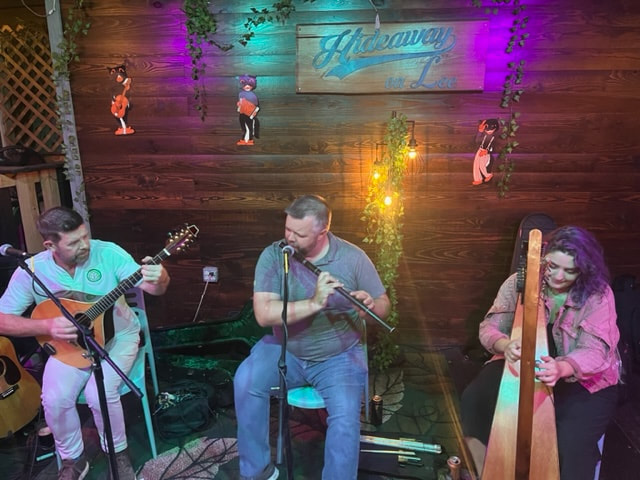 Breizh Amerika, un ardent défenseur de la culture bretonne aux États-Unis, a récemment organisé une série d'événements captivants à travers différents lieux, marquant la célébration de Samhain. Cette festivité, imprégnée du tissu de l'héritage celtique, s'est déployée non seulement à Lafayette, en Louisiane, mais également dans d'autres endroits tels que La Nouvelle-Orléans, Scott, et San Francisco. Le soutien de la Région Bretagne a été déterminant pour donner vie à ces célébrations culturelles. Depuis 2023 et la mise en place d'une nouvelle politique de soutien aux Bretons du Monde et à leurs amis, la Région de Bretagne a soutenu les Bretons du Monde qui se retrouvent partout dans le monde pour célébrer leur culture, le Nouvel An celtique (Samhain) et un patrimoine partagé. Des événements thématiques de Samhain ont été organisés aux États-Unis, mais aussi à Dublin, au Cambodge et à Hambourg. Les racines d'Halloween remontent à la tradition celte de Samhain, commémorant l'avènement de l'hiver et le début de la Nouvelle Année celtique. Dans les cultures bretonnes et celtiques, cette festivité revêt une profonde signification culturelle, servant d'occasion majeure pour célébrer l'héritage et les coutumes anciennes. Les événements de cette année ont été un témoignage de la richesse culturelle de la Bretagne, résonnant à travers les terres de Louisiane et de Californie. Chaque célébration a capturé l'esprit des traditions partagées, des échanges culturels et de la vitalité du patrimoine breton. Plongeons dans les événements enchanteurs de Samhain à travers ces lieux distincts. Samhain à Lafayette, Louisiane Breizh Amerika est étroitement liée au paysage culturel de la Louisiane, favorisant les connexions et célébrant la culture breton depuis 2016. La commémoration cette année de Samhain à Lafayette a servi de continuation harmonieuse, s'appuyant sur l'histoire vibrante des collaborations passées et des échanges culturels. La soirée s'est déroulée au Hideaway on Lee, un lieu musical chargé de charme cajun. Commencée par un dîner de VIP de la ville élaboré par le célèbre chef cajun Toby Rodriguez, une atmosphère d'anticipation a enveloppé les invités, créant un cadre propice à une expérience culturelle remarquable. Un moment crucial de la soirée est arrivé avec la cérémonie officielle de signature entre Breizh Amerika et le Celtic Bayou Festival, consolidant leur engagement à amplifier la présence bretonne et la représentation culturelle lors de ce festival renommé. Cette collaboration vise à tisser la riche toile de traditions bretonnes – musique, danse, langue, et plus encore – dans le tissu du festival, assurant une célébration vibrante du patrimoine partagé. Alors que la nuit se transformait en un captivant voyage musical, l'essence des traditions celtiques s'harmonisait parfaitement avec l'esprit vibrant de la Louisiane. Avoca, un groupe irlandais basé en Louisiane, a empli l'air de mélodies imprégnées d'héritage irlandais, transcendant les frontières pour tisser une symphonie résonnant avec l'âme des Celtes et de la culture cajun. À la suite des performances envoûtantes d'Avoca, les membres de Breizh Amerika Collective sont montés sur scène, enrichissant davantage la soirée avec les mélodies enchanteresses et les rythmes de la culture bretonne. Leur musique et leur danse ont transporté le public vers les rives de Bretagne, favorisant une compréhension plus profonde et une appréciation de la musique bretonne. La soirée s'est achevée alors qu'un public composé de Bretons, d'amis de la Bretagne et d'Américains dansait jusqu'aux heures tardives de la nuit, se laissant emporter par les mélodies captivantes qui ont uni les continents et célébré la richesse de la culture bretonne. Projection de "Copains comme Cajuns" à Scott La série d'événements de Breizh Amerika en Louisiane s'est poursuivie avec une projection spéciale de "Copains comme Cajuns" à Scott, en Louisiane. Le rassemblement de midi a eu lieu en tant qu'événement déjeuner à Scott, en Louisiane, renforçant davantage la connexion entre les deux cultures. Breizh Amerika, aux côtés du comité de jumelage de Scott et du maire de la ville, a participé à l'événement dans le but de développer des liens futurs. Lors de cet échange culturel, les participants ont été traités à une délicieuse sélection de mets locaux, dont le célèbre boudin, un joyau culinaire qui a valu à Scott le titre de "Capitale mondiale du boudin". Au milieu des saveurs de la cuisine cajun, les discussions ont coulé, les idées ont fleuri et les amitiés se sont approfondies. Breizh Amerika, dédié au comblement des écarts culturels, a présenté le documentaire "Copains comme Cajuns" aux représentants et participants de Scott. Le film retrace un voyage fascinant de La Nouvelle-Orléans au cœur du pays cajun, dévoilant l'âme de la Louisiane, qui résonne remarquablement avec l'esprit de la Bretagne. Cette expérience cinématographique captivante en anglais, français et breton met en lumière des parallèles saisissants entre la résilience, les traditions et la chaleur des cultures bretonne et cajun, renforçant les racines communes qui créent une base solide pour des collaborations continues entre la Bretagne et la Louisiane. L'engagement de ces membres du comité et du maire à préserver et célébrer leur patrimoine a mis en valeur les liens durables entre ces cultures vibrantes. Le rassemblement déjeuner à Scott a capturé l'essence de la culture cajun, célébrant sa langue, ses délices culinaires et ses entreprises artistiques. Il a souligné l'importance de la préservation et de l'échange culturels, laissant une empreinte indélébile sur tous les participants. Samhain à La Nouvelle-Orléans La Nouvelle-Orléans, célèbre pour ses hôtels hantés et ses innombrables histoires de fantômes effrayantes et mystérieuses hantant différents lieux de la ville, se présente comme le cadre parfait pour célébrer Samhain, le Nouvel An celtique où les esprits errent au sein de la vibrante toile de fond de la Big Easy. Breizh Amerika a orchestré une série d'événements divers, chacun tissant l'essence des traditions bretonnes dans le tissu culturel de la plus grande ville de Louisiane. Les festivités ont commencé avec un concert intime chez l'habitant, une rencontre qui a réuni des passionnés de musique irlandaise et celtique. Dans cet environnement intime, Breizh Amerika a engagé une discussion avec un public averti d'amateurs de musique, partageant des détails complexes sur les traditions culturelles bretonnes. La soirée s'est déroulée comme un enrichissant échange culturel, où Breizh Amerika a eu l'opportunité d'approfondir les subtilités de la culture bretonne. Un autre moment fort fut le captivant concert de musique bretonne organisé à l'Alliance Française de La Nouvelle-Orléans. Cette réunion fut une union harmonieuse avec la diaspora bretonne, une soirée riche en culture, mélodies envoûtantes et délicieuses crêpes. L'événement a non seulement célébré l'unicité culturelle de la Bretagne, mais a également servi de rendez-vous pour les Bretons et les passionnés de tout ce qui est breton pour s'immerger dans un milieu culturel vibrant. La clôture des célébrations a vu Breizh Amerika faire une apparition en direct à la radio sur la station WTUL. Cette plateforme a permis une portée plus large, permettant à l'organisation d'amplifier son message et sa mission de promotion de la culture bretonne. La session en direct à la radio a été l'occasion d'interagir avec un public plus large, partageant des idées et des récits qui ont mis en lumière les aspects uniques du patrimoine breton. Notamment, Charles Kergaravat, le président de Breizh Amerika, a visité le New Orleans Jazz Museum et exploré des documents d'archives liés à des figures historiques telles que John James Audubon et Julien de Lallande Poydras, renforçant davantage les liens culturels entre la Bretagne et la Louisiane. La célébration multifacette de Samhain à La Nouvelle-Orléans a illustré la puissance de l'échange culturel et de l'appréciation. À travers les concerts chez l'habitant, les soirées musicales et les sessions radio, Breizh Amerika a renforcé le lien entre les traditions bretonnes et le paysage culturel diversifié de La Nouvelle-Orléans, favorisant une compréhension plus profonde et une appréciation du patrimoine partagé entre la Bretagne et la Louisiane. Samhain à San Francisco : Une Célébration Culturelle Entre l'Irlande, la Bretagne, et la Vibrante Ville de la Baie
San Francisco, la deuxième ville la plus densément peuplée des États-Unis, est bien plus qu'une métropole animée : c'est un pôle culturel qui a favorisé des mouvements artistiques et accueilli des communautés diverses. C'est une ville où des poètes de la Beat Generation comme Jack Kerouac ont prospéré, un centre emblématique du mouvement Flower Power, et un lieu où la musique du monde trouve sa scène accueillante. Des musiciens d'Irlande et de Bretagne se sont réunis dans cette ville dynamique pour célébrer Samhain (connu sous le nom de Kalan Goañv en Bretagne), le festival celtique marquant le début de la "moitié sombre" de l'année, à l'origine de Halloween aux États-Unis. Breizh Amerika, qui a déjà organisé des événements dans la ville, a orchestré cette réunion, tenue au United Irish Cultural Center à San Francisco. L'événement "Celtic Samhain: Colm Ó Riain & Breizh Amerika Collective" mettait en vedette le virtuose violoniste irlandais Colm Ó Riain et son groupe. Ils se sont lancés dans une exploration des liens entre différents mondes musicaux, aux côtés du Breizh Amerika Collective. Colm a dédié plusieurs morceaux à Samhain, un moment de la tradition celtique où la frontière entre les vivants et l'Autre Monde devient mince. Le United Irish Cultural Center revêt une grande importance pour la communauté irlandaise de la ville, une communauté qui a des racines profondes dans l'histoire de San Francisco, avec un notable trente-sept pour cent de la population pendant la ruée vers l'or étant d'origine irlandaise. Les Bretons ont également leur place dans cette histoire, notamment à travers l'histoire remarquable de Joseph Yves Limantour. La nuit suivante, une superbe session de jam a eu lieu à Bella Cora avec les mêmes musiciens, pour le plus grand plaisir des habitués et des passants. Cette célébration à San Francisco, fusion de traditions musicales et d'échanges culturels, illustre l'ouverture de la ville à des influences diverses et son accueil du riche tissu des patrimoines mondiaux. Continuing the Journey Une fois de plus, Breizh Amerika exprime sa profonde gratitude à la Région Bretagne pour son soutien indéfectible. Leur précieux appui a été crucial pour donner vie à ces célébrations dynamiques, unissant des communautés à travers les continents et approfondissant l'appréciation de la culture bretonne à travers le monde. Breizh Amerika lance également une invitation à toute nouveau à la diaspora bretonne aux États-Unis, les invitant à participer à nos futurs événements. Votre engagement est crucial pour perpétuer notre mission commune de célébrer et de préserver l'héritage breton, de favoriser les liens et de créer des expériences inoubliables. Ensemble, continuons à tisser les fils de notre patrimoine culturel et à renforcer les liens de notre communauté, guidés par l'esprit de notre héritage partagé. Discover the Fascinating History of the TriskelionThe triskelion, an ancient and captivating symbol, has been adopted by diverse cultures throughout history, including the Celts and the Bretons. In this article, we delve into the origin of the word "triskelion," its cultural and spiritual significance, and the varied meanings and interpretations associated with it. If you've visited Brittany or other Celtic nations, chances are you've encountered the triskelion adorning buildings, monuments, or jewelry. But do you truly grasp the history and depth of meaning behind this symbol? This article aims to offer an in-depth exploration of the triskelion, providing valuable insights into its origin, evolution, and cultural relevance. What is the Triskelion?The triskelion comprises three intertwined spirals or legs converging at a central point. The term "triskelion" derives from ancient Greek, combining "tri-" meaning "three" and "skelos" meaning "leg." This symbol and its name have been embraced and adapted by various cultures over time, notably the Celts and the Bretons. The Meaning of the TriskelionThe triskelion holds a complex array of meanings. Commonly, its three spiraling branches are seen to symbolize water, earth, and fire, unifying the three Celtic realms. Some believe it signifies sky, earth, and water. Others interpret the branches as representative of the three principal gods in Celtic lore: Lug, Ogme, and Dagda. There are also associations with sleep, dream, and awakening, or the stages of life: childhood, adulthood, and old age. Furthermore, the triskelion may symbolize time: past, present, and future. Some speculate it might draw inspiration from the shamrock, although this theory isn't widely accepted. The triskelion is a captivating symbol steeped in history, open to diverse interpretations across cultures and belief systems. Its significance often intertwines with Celtic spirituality and Breton identity, holding spiritual importance for many. The Triskelion's Global HistoryThe triskelion traces back over 4000 years, extensively used by the Celts in their art and culture. Its oldest depictions are found on Malta's megalithic temples from the Neolithic era and Ireland's Newgrange tomb dating back to 3200 BC. This symbol also appeared in ancient Greece and became prominent in Celtic art during the La Tène period, spanning the 5th to 7th centuries BC. It subsequently spread to the Gothic West, reaching the Isle of Man in the 13th century and adorning coats of arms, art, and military gear across Europe and the Balkans. Its prevalence on Celtic military equipment suggests a belief in its magical protective properties. The triskelion also intersected with Pythagorean mystical thought, where the number three symbolized perfection and harmony, alongside the golden ratio. In the Christian context, the triskelion found its place in Celtic and Catholic art and sculpture, co-opted by both Christianity and ancient pagan beliefs as it evolved through successive migrations. Today, the triskelion is closely linked with Brittany, considered one of its enduring symbols. Contemporary Bretons and tourists view it as emblematic, and it's commonly featured on Breton souvenirs. However, its substantial prominence as a Celtic symbol in Armorica appears relatively recent. The Triskelion in Branding and DiningDuring the Celtic revival of the 1970s, figures like Alan Stivell popularized the triskelion, making it inseparable from Brittany's identity. Brands, recognizing its significance, integrated it into their imagery. The "Paysan Breton" brand adopted it as an emblem, and the Lancelot brewery stamped it on bottles of their organic beer "Telenn Du." The triskelion proliferates on merchandise like mugs, keychains, or T-shirts, and even in cuisine. While its meaning is subjective, some view it as a Breton good luck charm. Numerous restaurants in Brittany and North America bear names like Triskel or Triskell:
Flags Embracing the TriskelionWhile rooted in Celtic origins, the triskelion has gained popularity in many cultures, notably in flags. Noteworthy flags include those of the Isle of Man, Sicily, and the flags representing Celtic nations. The Isle of Man Flag The flag of the Isle of Man, or Mann flag (Manx: brattagh Vannin), prominently displays a triskelion composed of three armed legs with golden spurs on a red background. This banner became the Isle of Man's official flag in 1932, based on the island's centuries-old coat of arms. The symbol's origins remain uncertain, possibly linked to Celtic or Nordic mythology. The Sicilian Triskelion Sicily, known for its captivating history and rich culture, features the triskelion on its flag. The triskelion is an ancient motif utilized by various cultures, including the Greeks, Romans, and Celts. Crafted in 1943 by Italian politician Andrea Finnochiaro Aprile, the flag features the Trinacria, an ancient symbol dating back to the 3rd century BC. The Trinacria, found on Syracusan coins from the 4th century BC, represents Sicily's triangular shape. Comprising three bent legs forming a triangle, it symbolizes Sicily's three capes: Peloro, Passero, and Lilibeo, framing the island's triangular perimeter. The legs belong to a female figure, metaphorically representing Sicily's stunning coastal beauty. Foliage adorning the legs signifies the island's agricultural abundance. In ancient Rome, Sicily was a major grain producer, deemed the Empire's granary. The central Medusa's head symbolizes protection and resilience. The Inter-Celtic Flag The inter-Celtic flag is used by Celtic communities and enthusiasts worldwide, prominently featuring in events, both cultural and political, and in sports gatherings involving teams representing Celtic regions. In conclusion, the triskelion, with its diverse interpretations and rich history, stands as a captivating symbol, uniting cultures and weaving a tapestry of meaning across centuries. Its journey through time and across continents underscores its enduring significance in the human narrative, offering a glimpse into the interconnectedness of our global heritage. |
Categories
All
Blog Archives
April 2024
Breizh Amerikais an organization established to create, facilitate, promote, and sponsor wide-ranging innovative and collaborative cultural and economic projects that strengthen and foster relations and cooperation between the United States of America and the region of Brittany, France. |
Contact us : info@breizh-amerika.com
Copyright 2014 - All rights reserved - Breizh Amerika - Privacy Policy
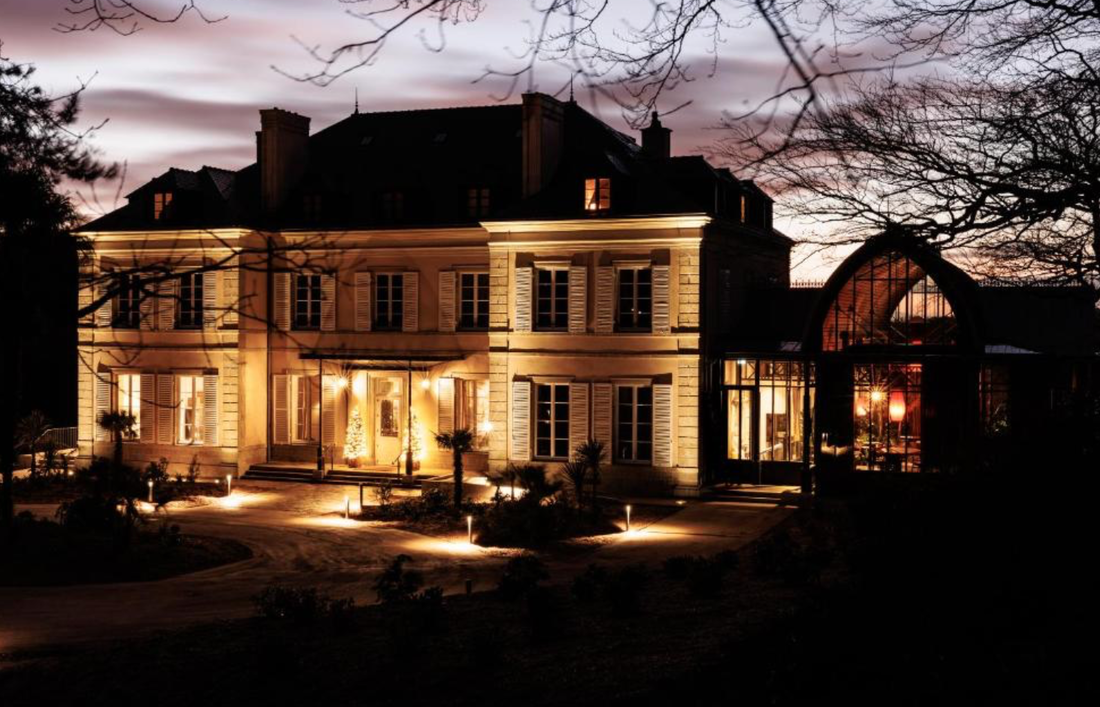
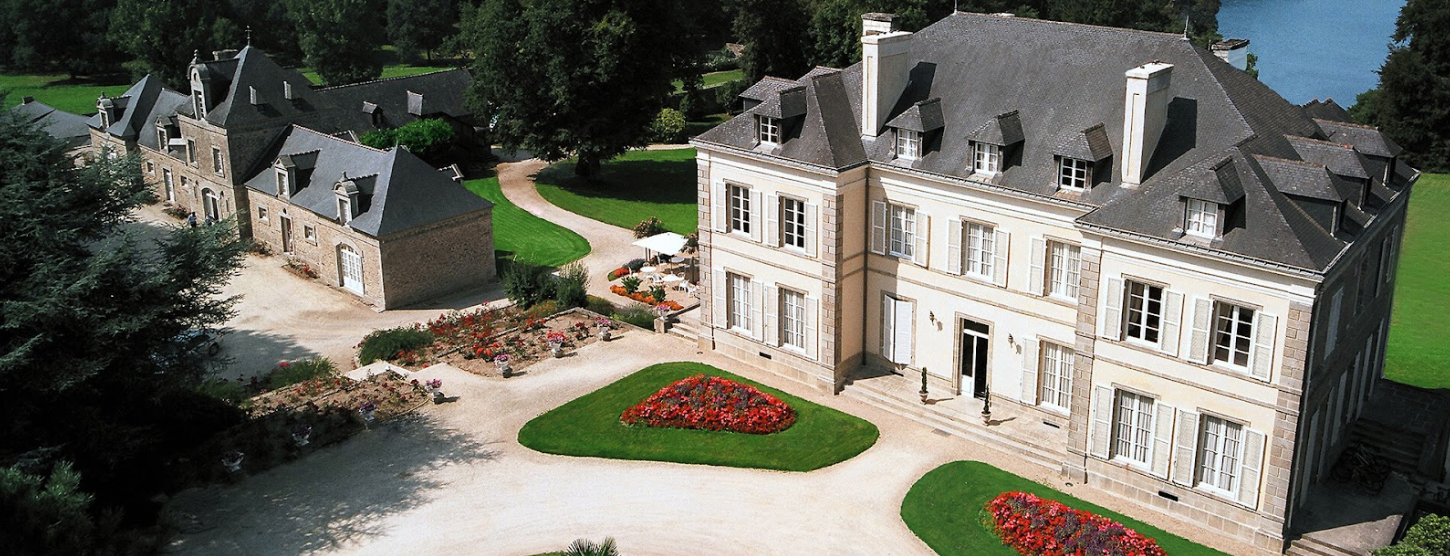
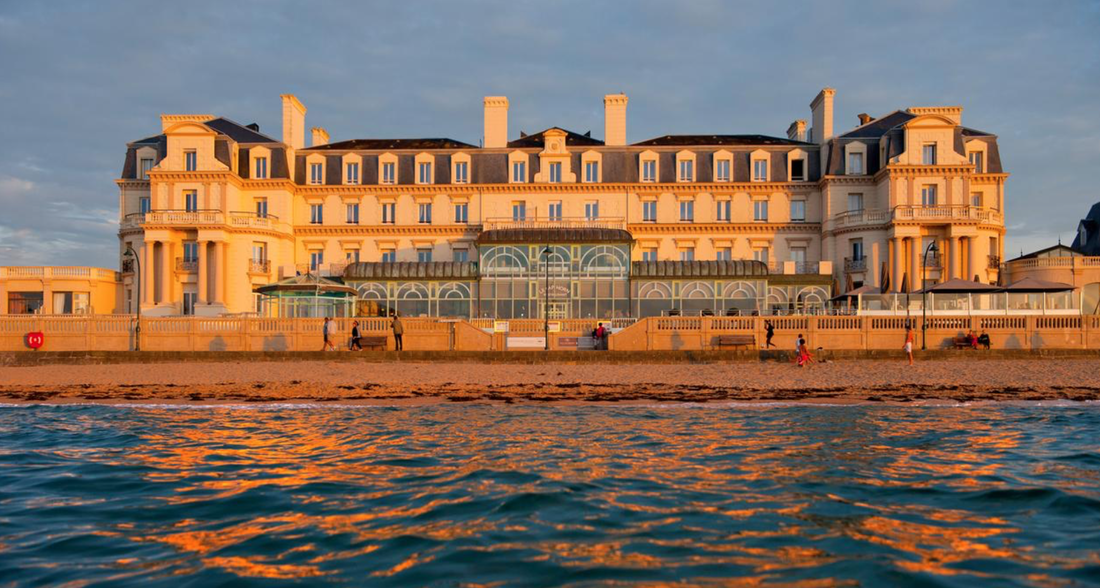
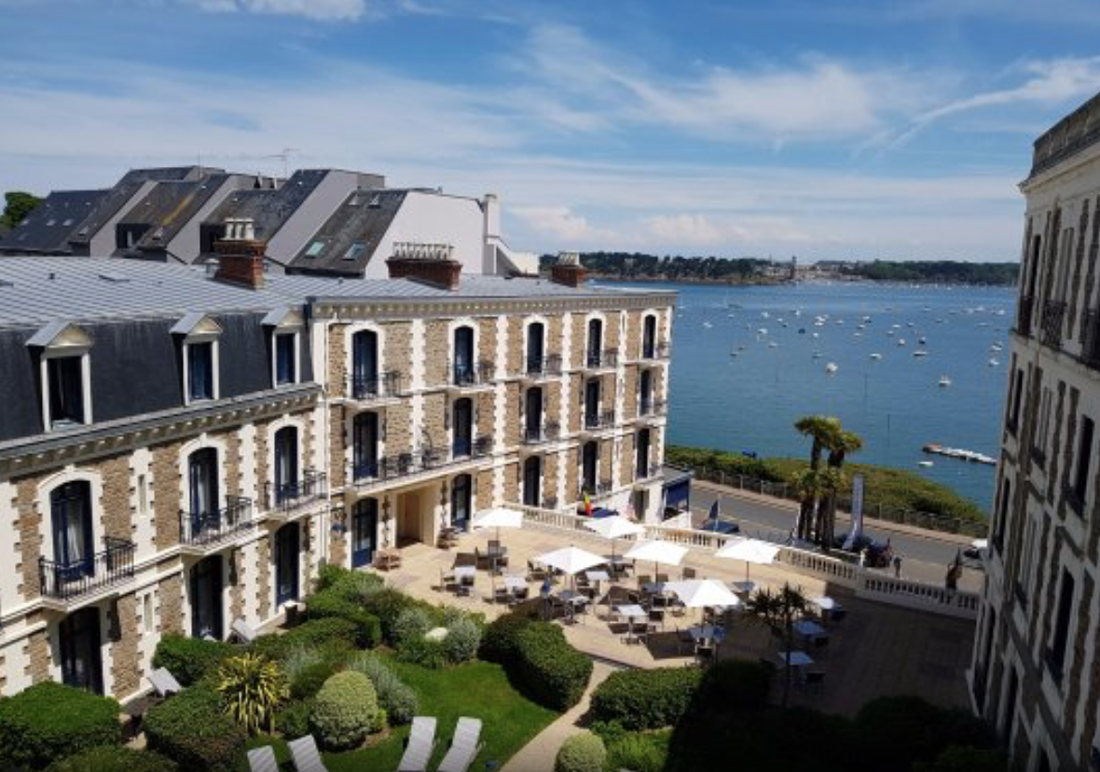
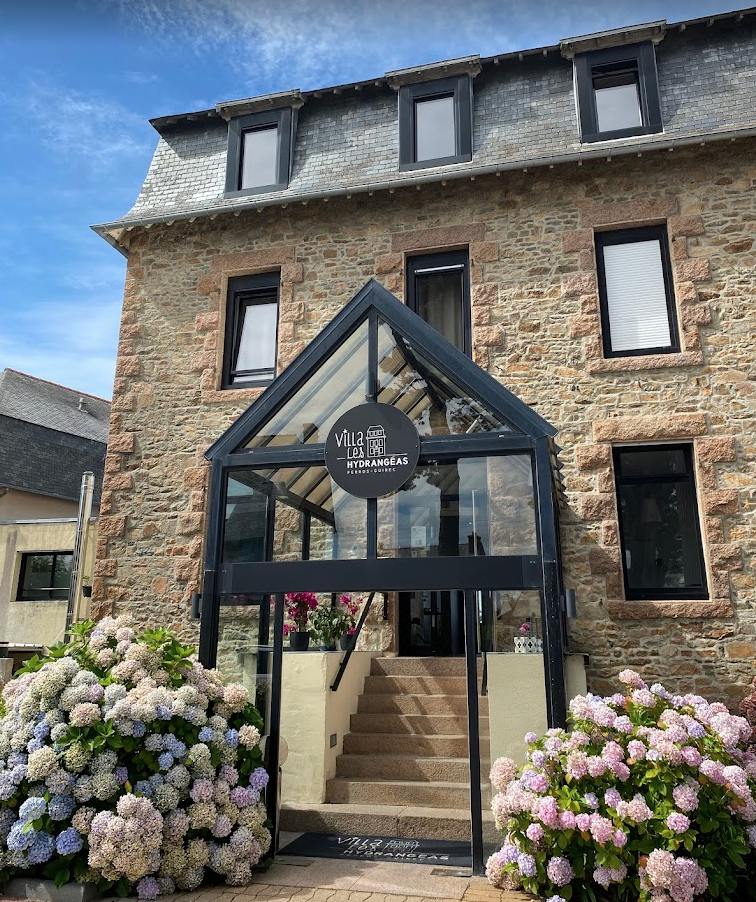
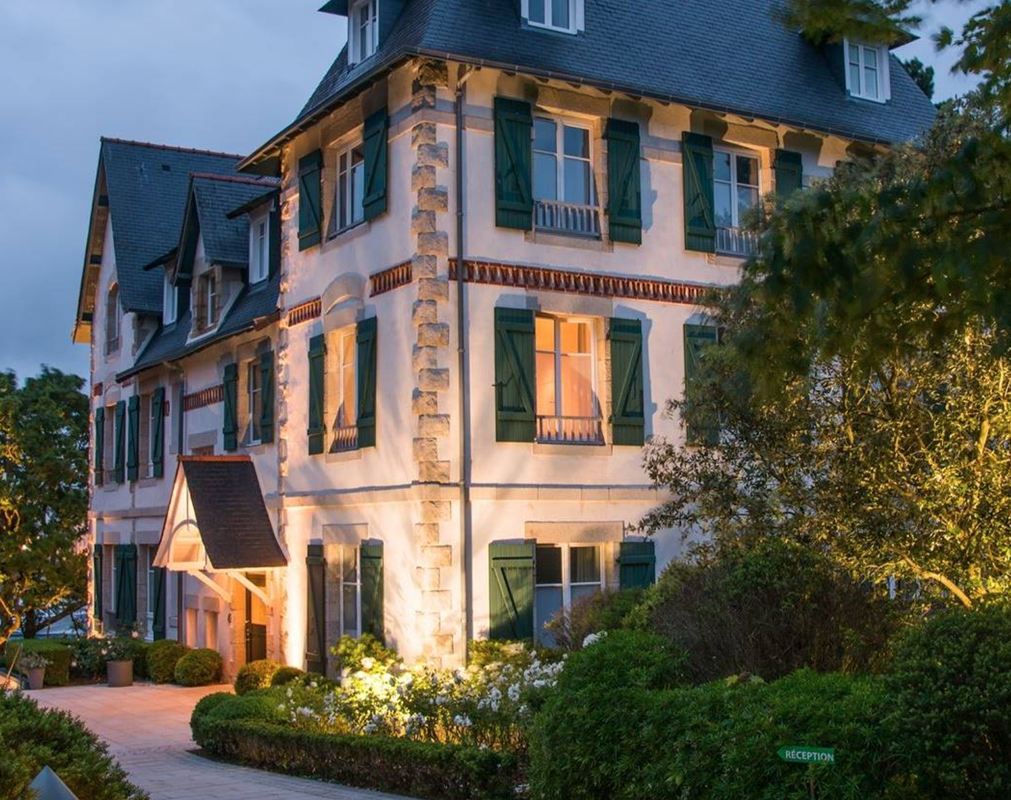
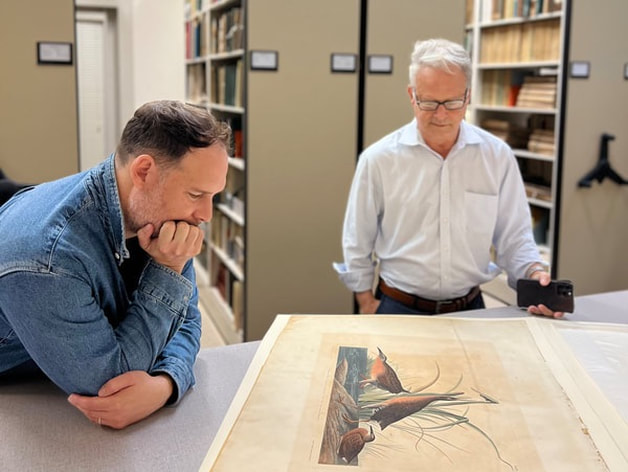
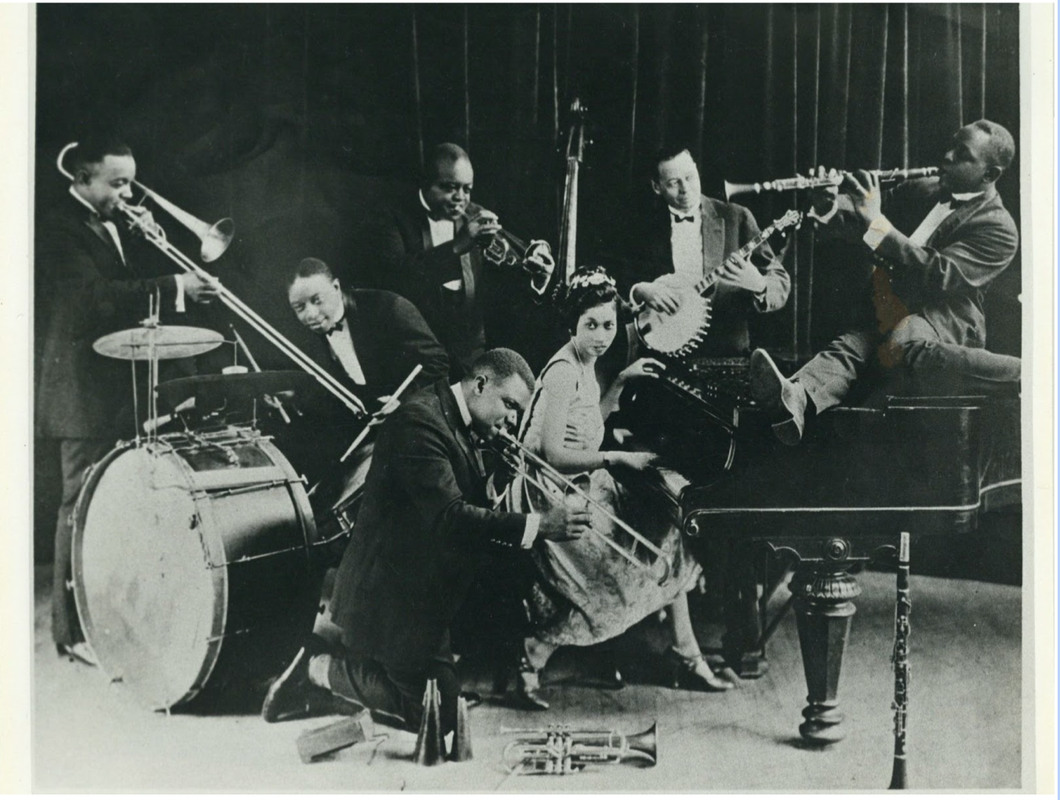
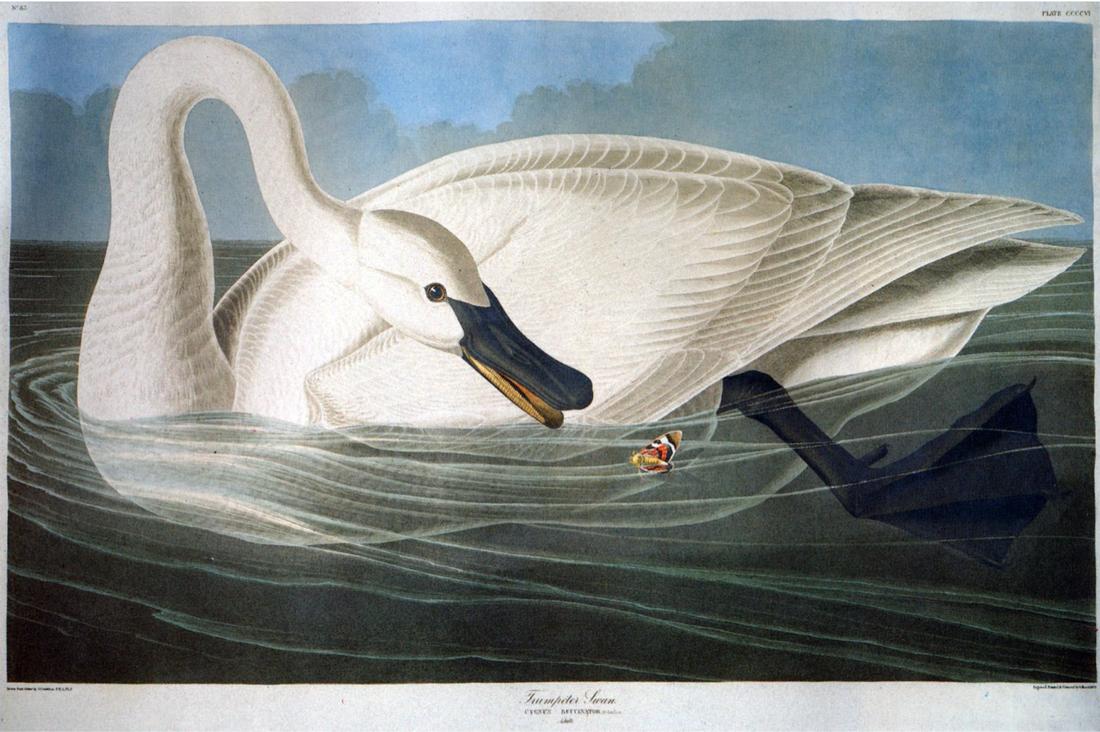
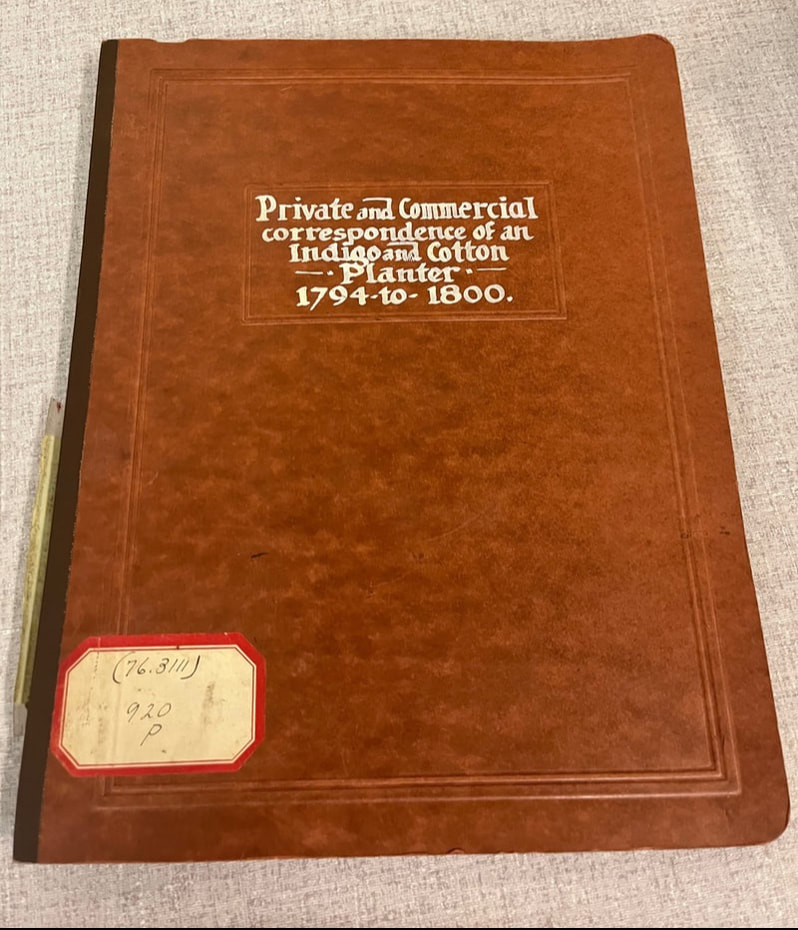
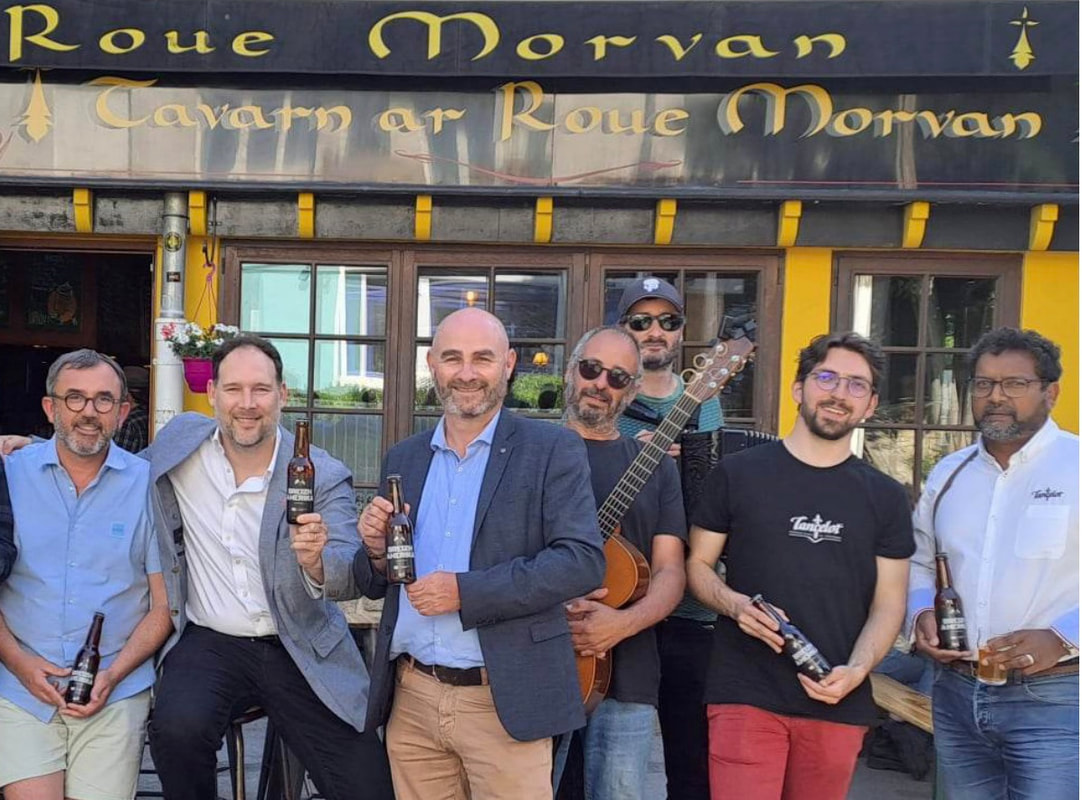
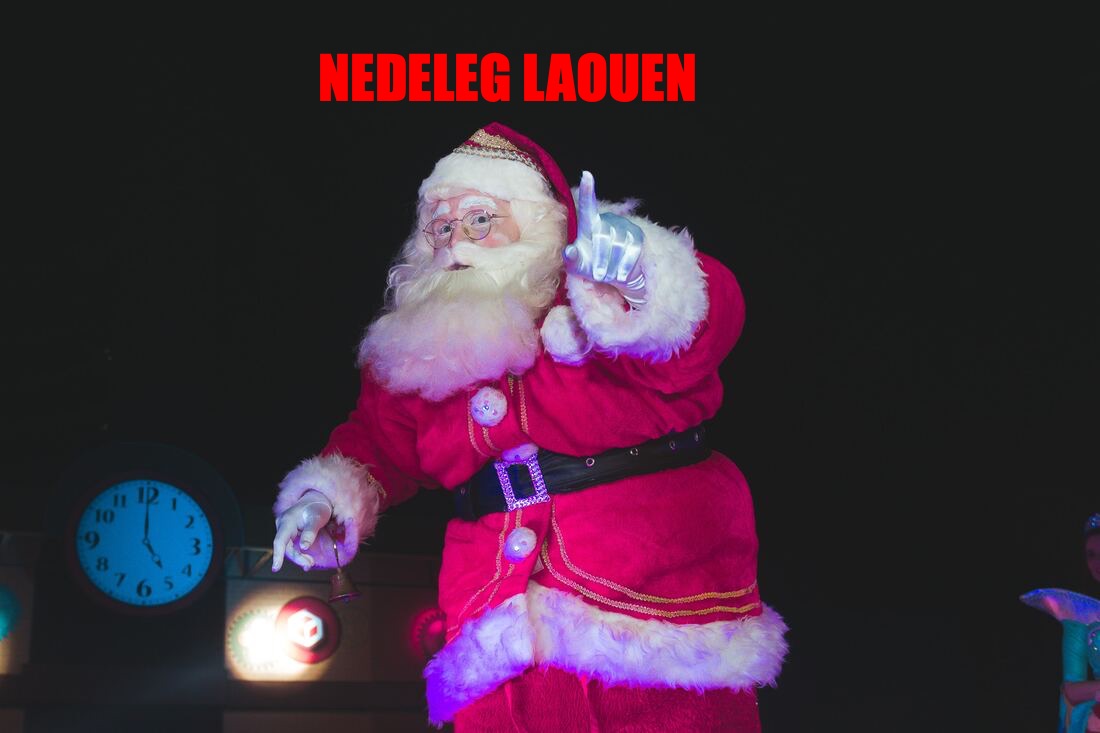
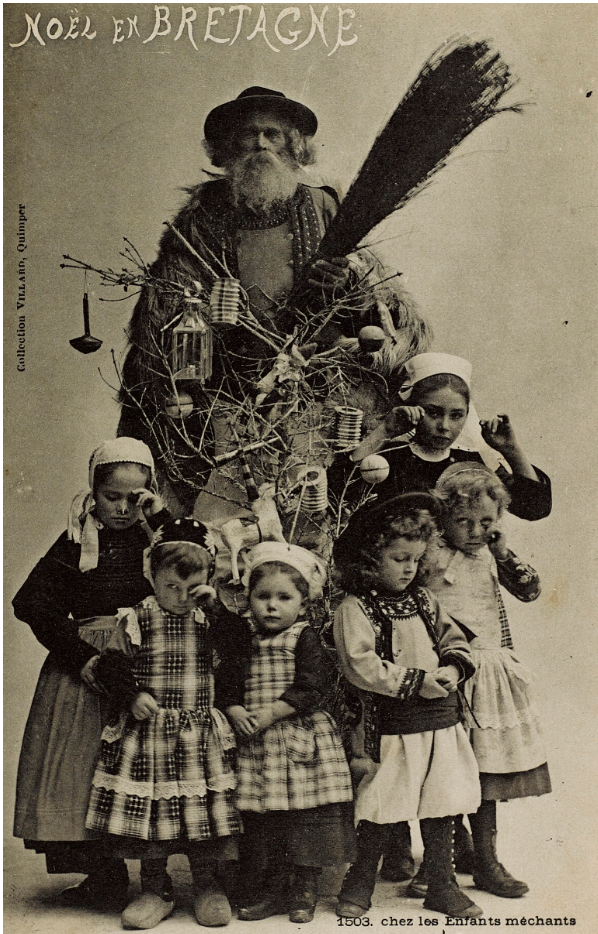

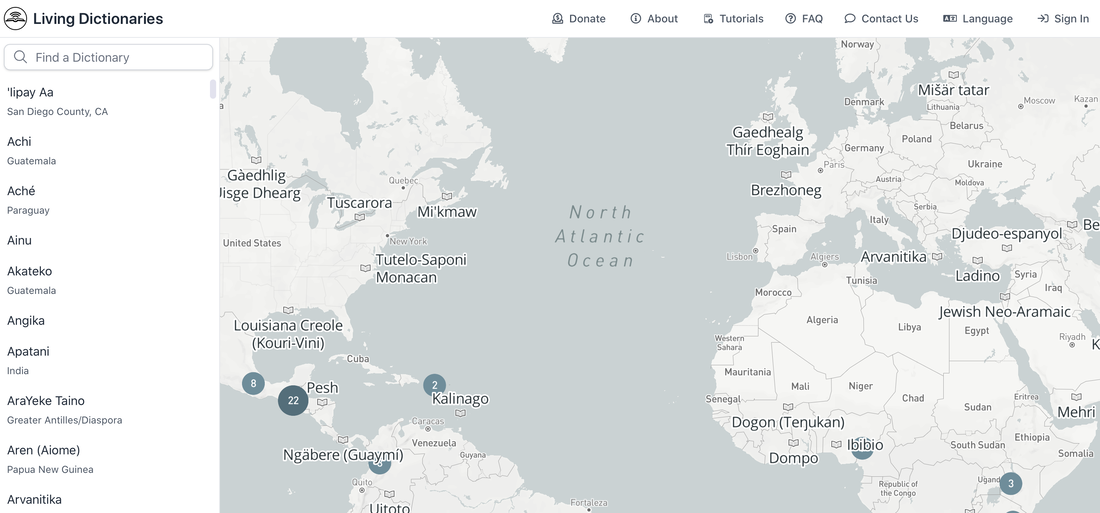
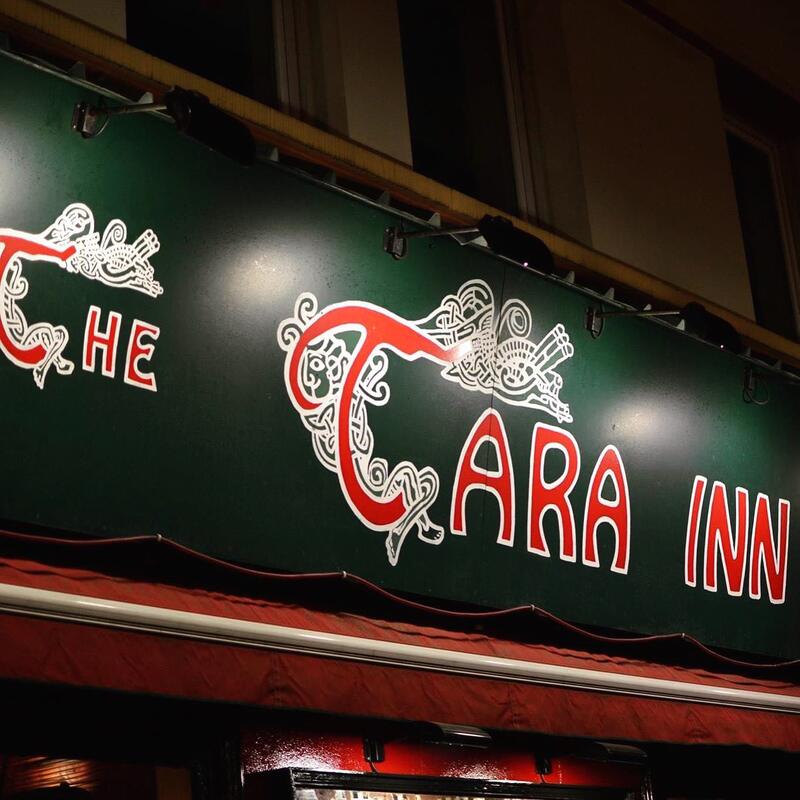
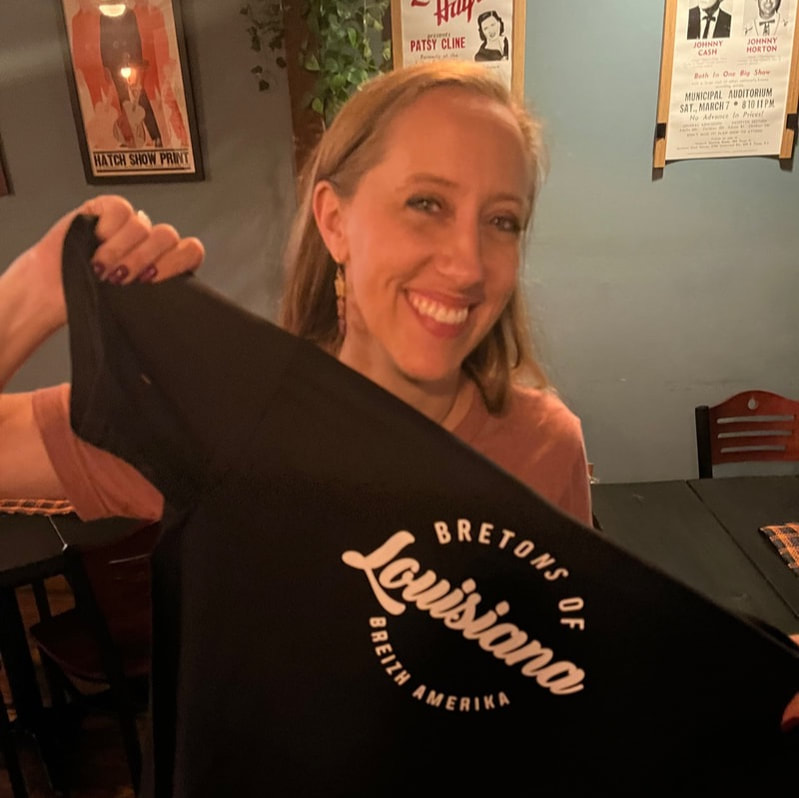
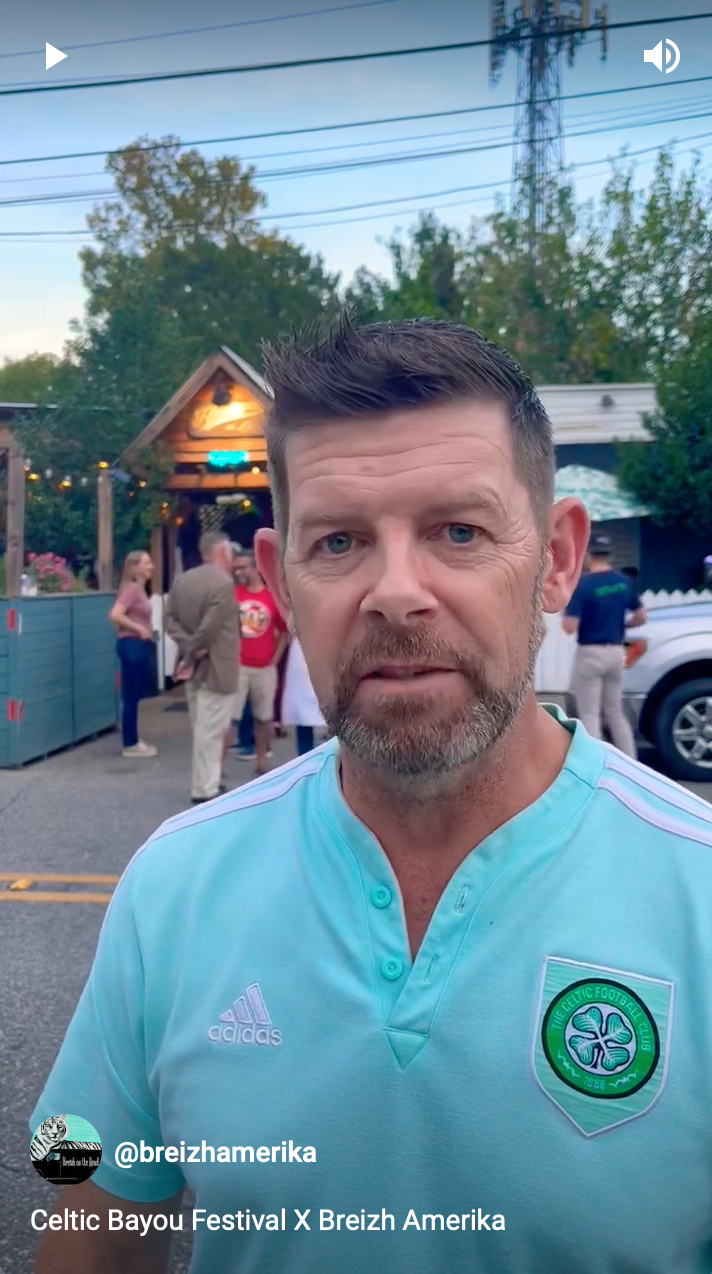
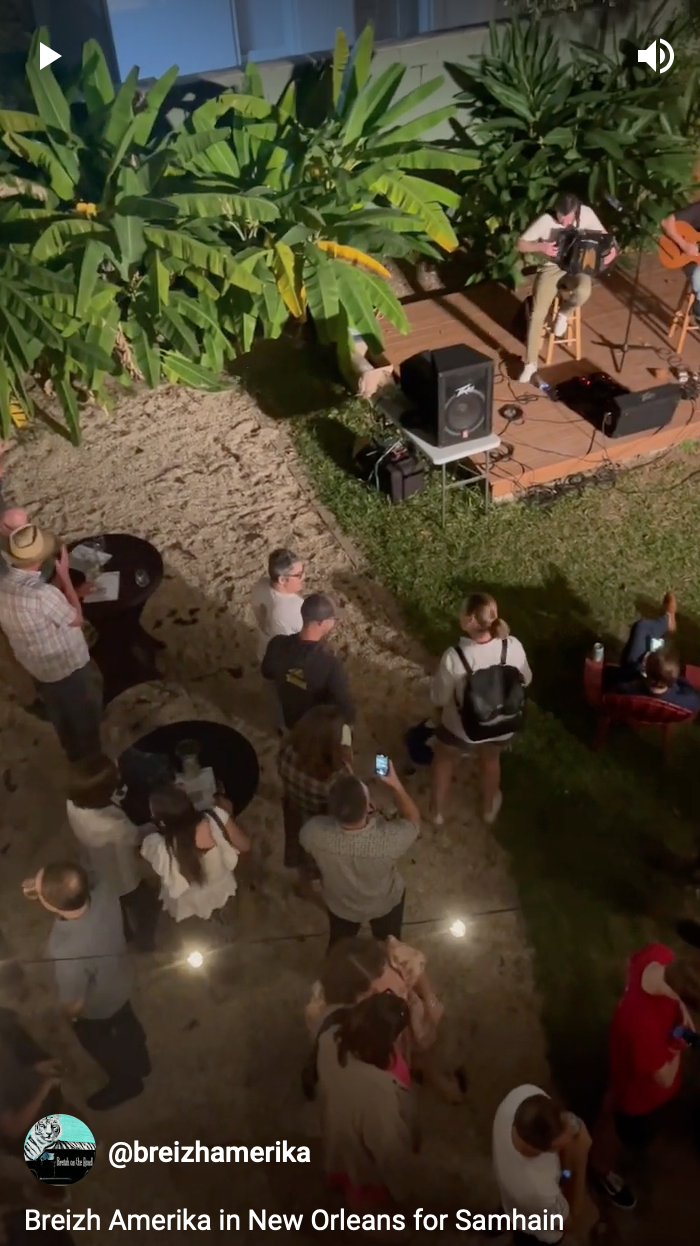
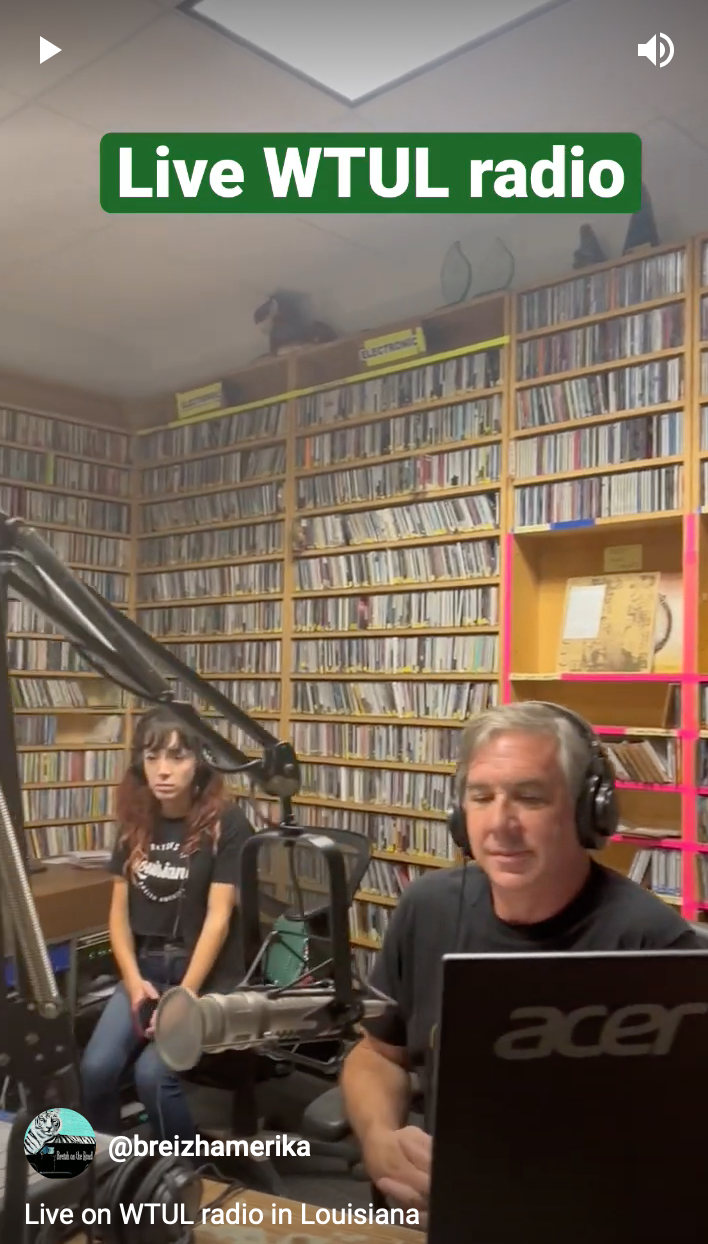
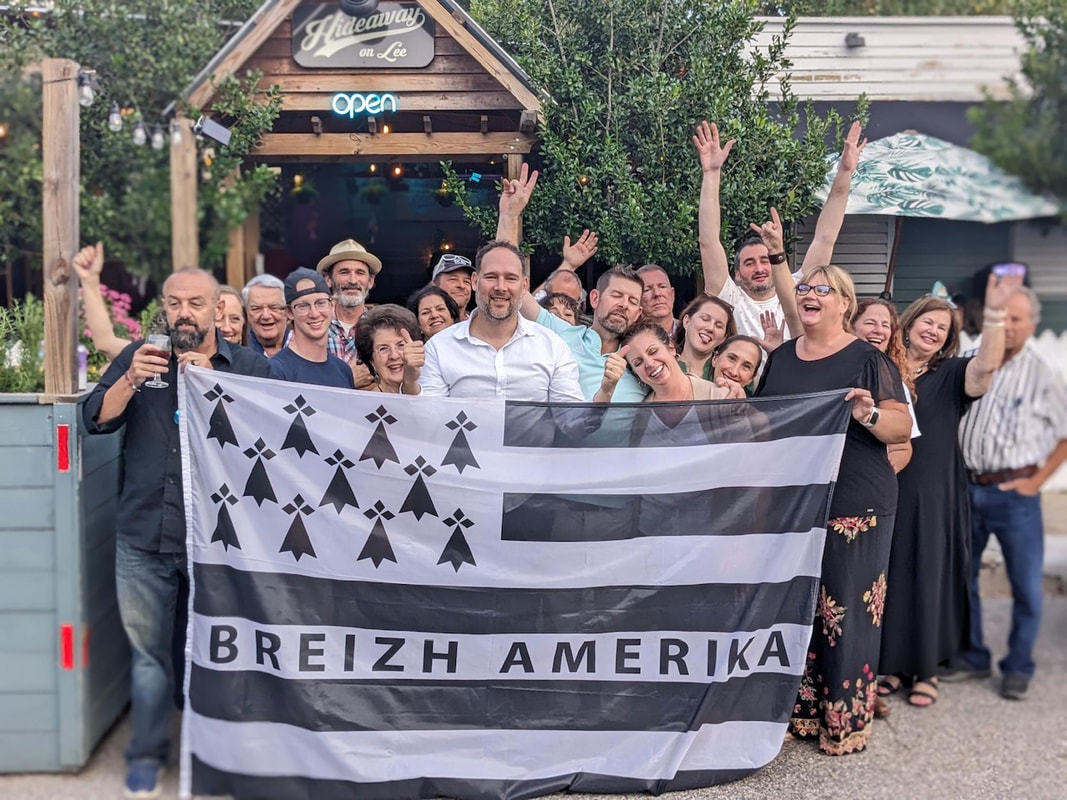
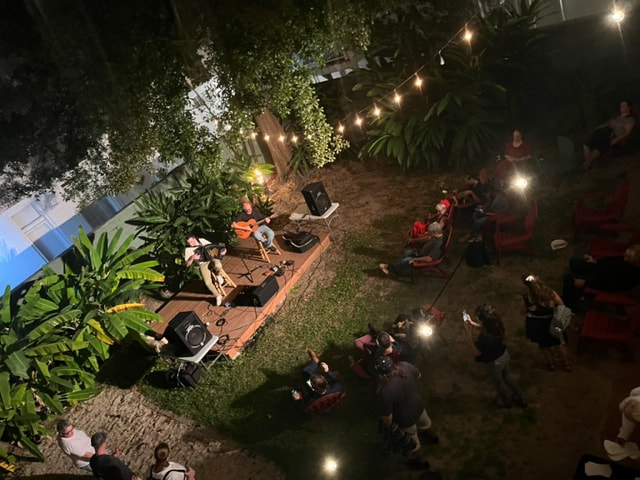
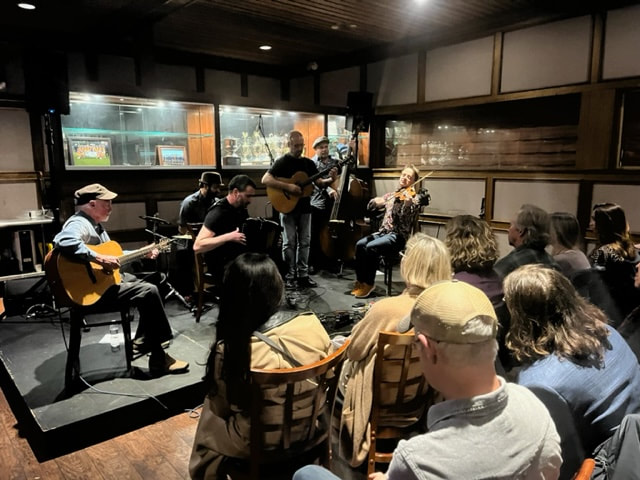
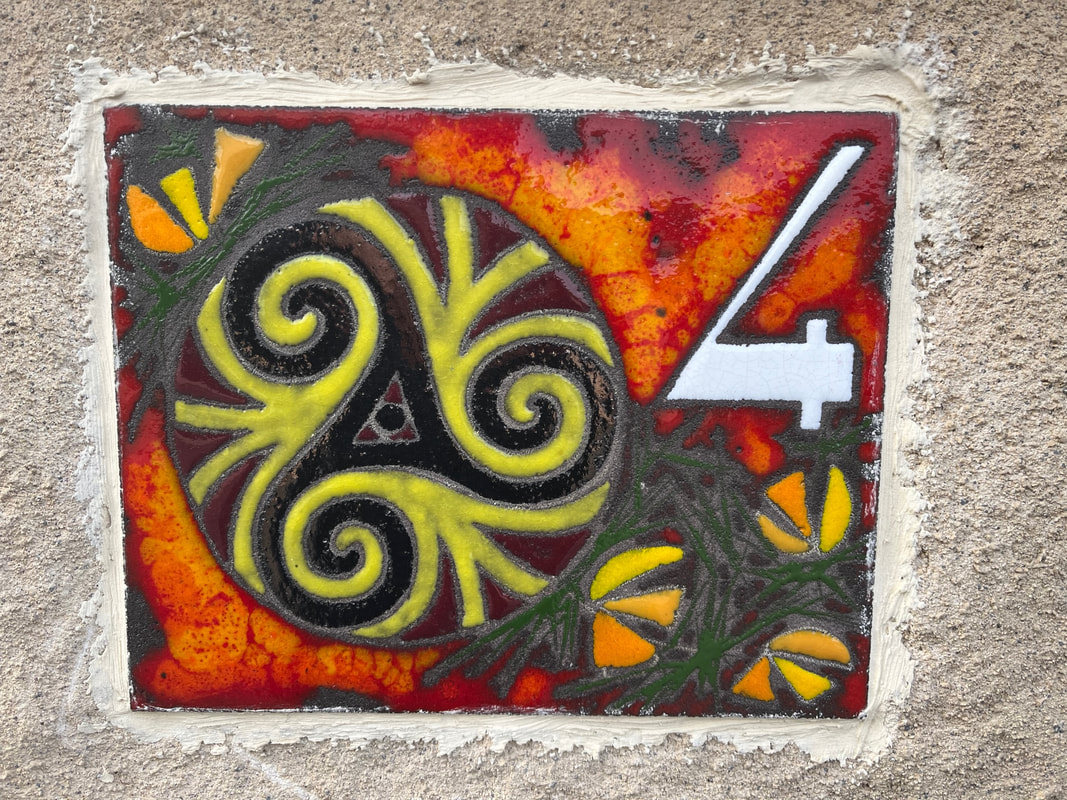
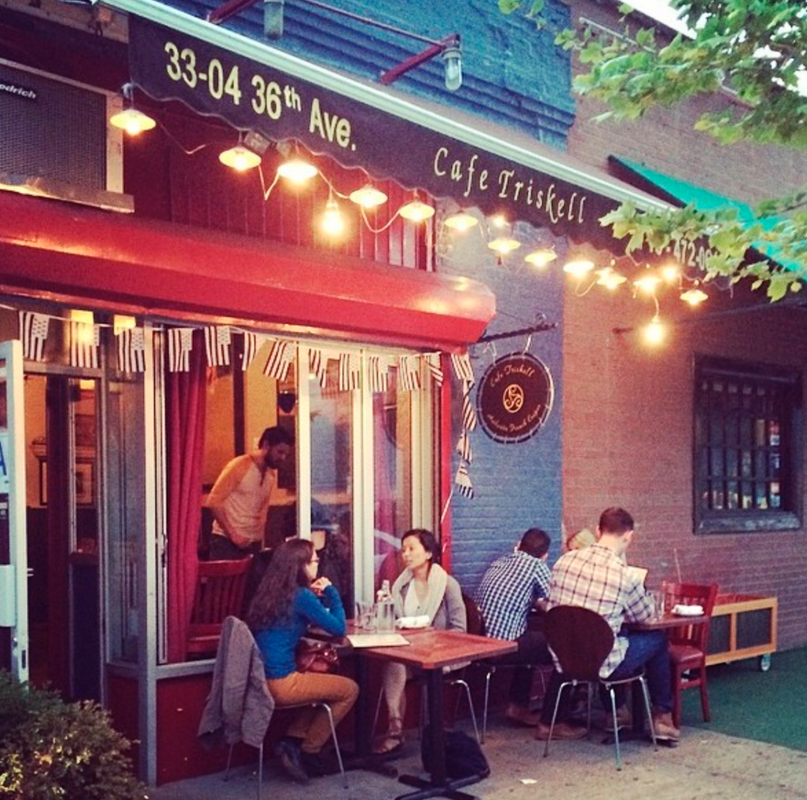
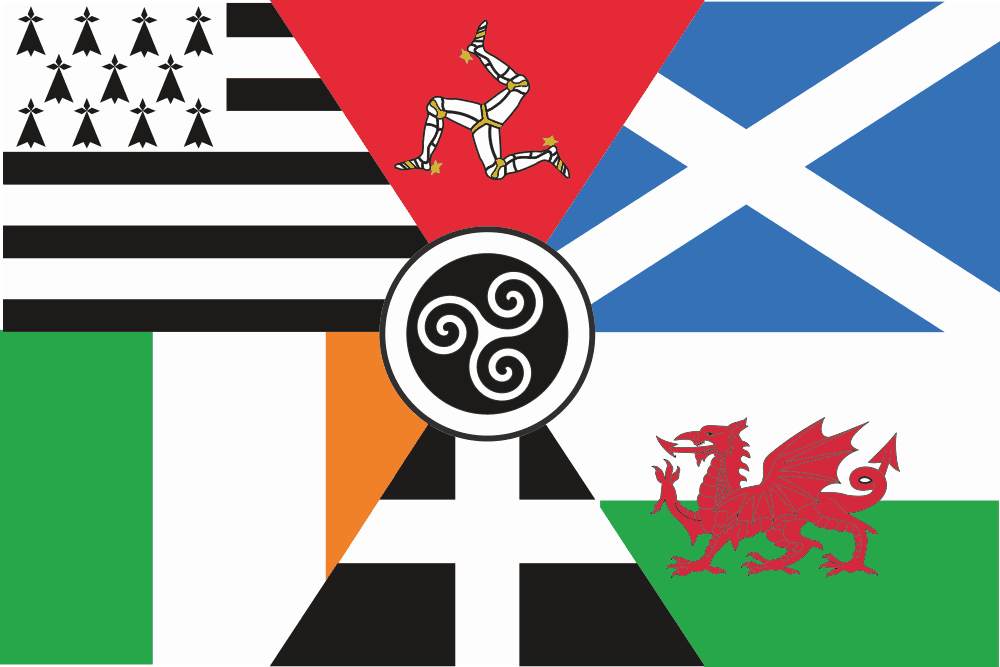
 RSS Feed
RSS Feed

